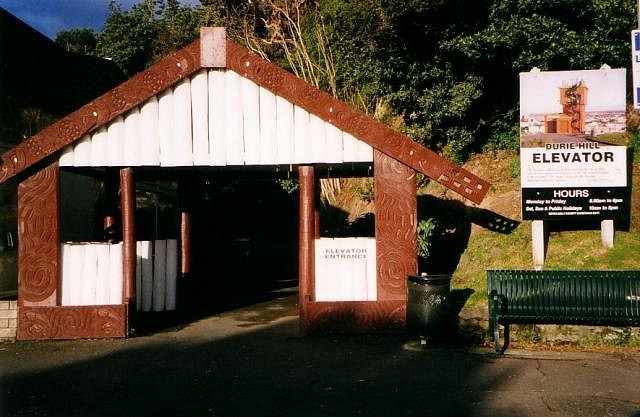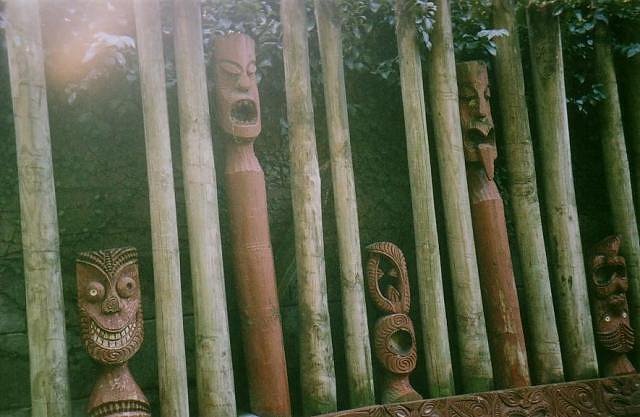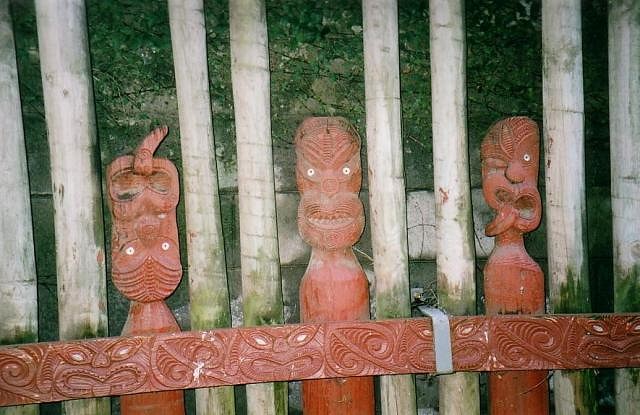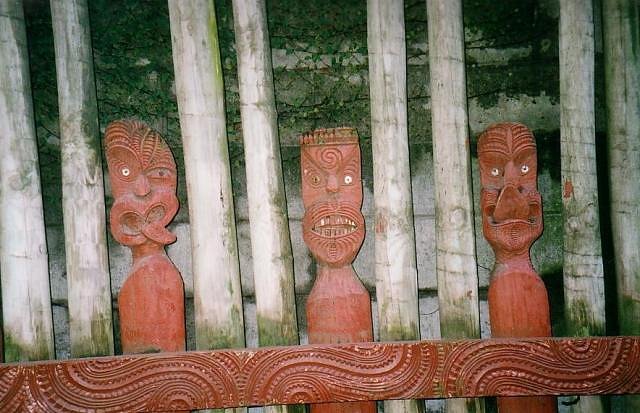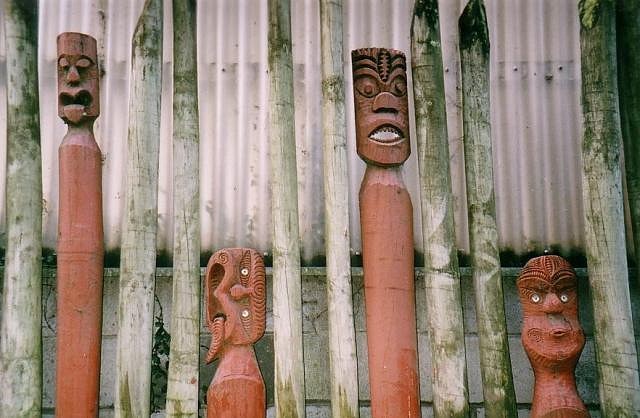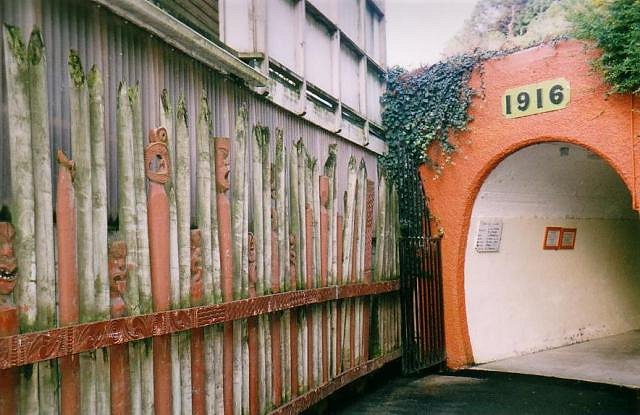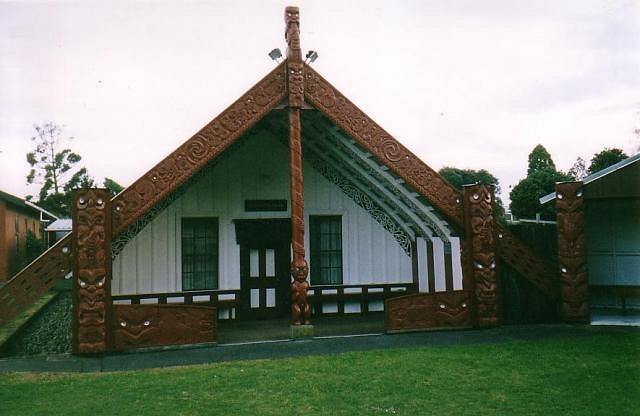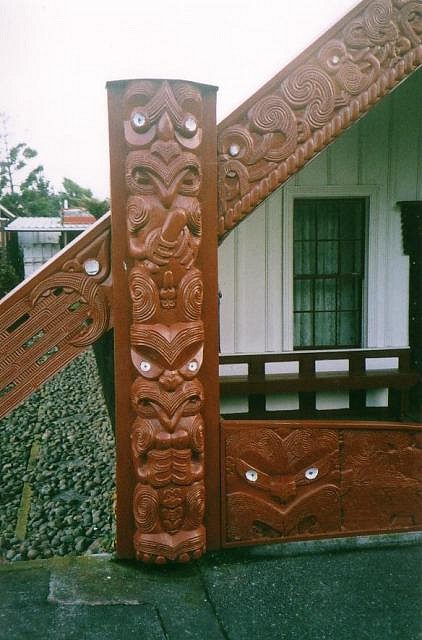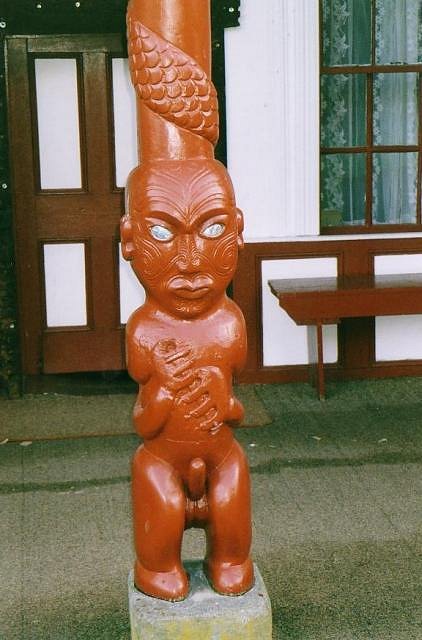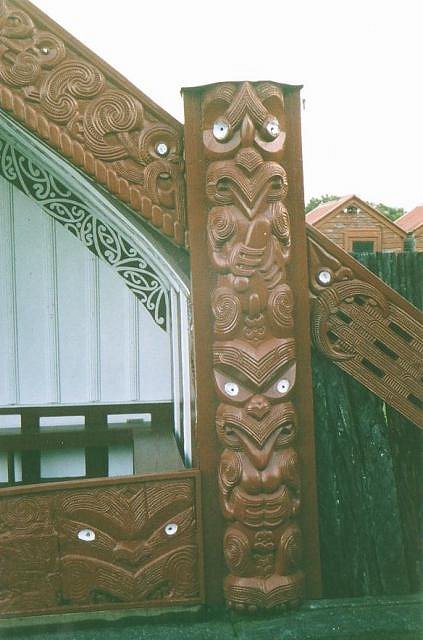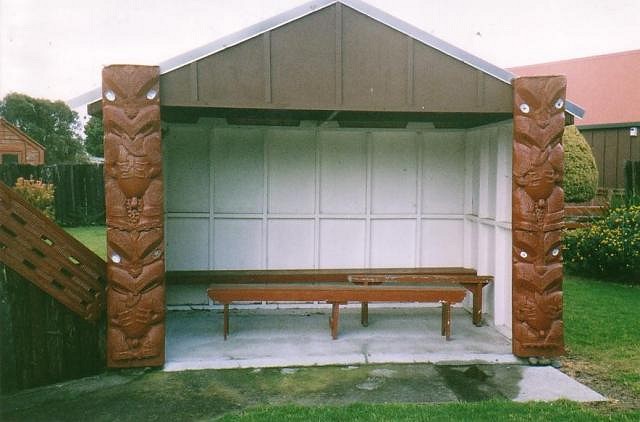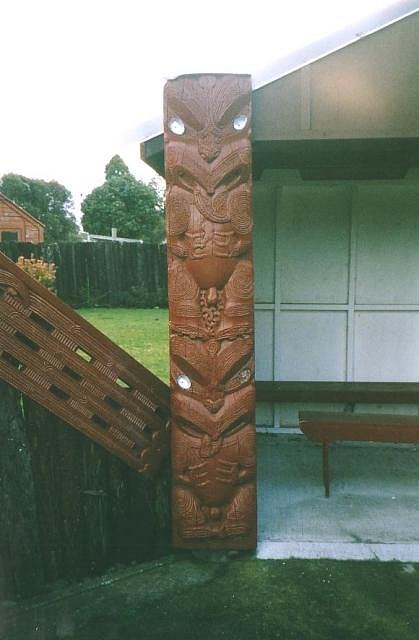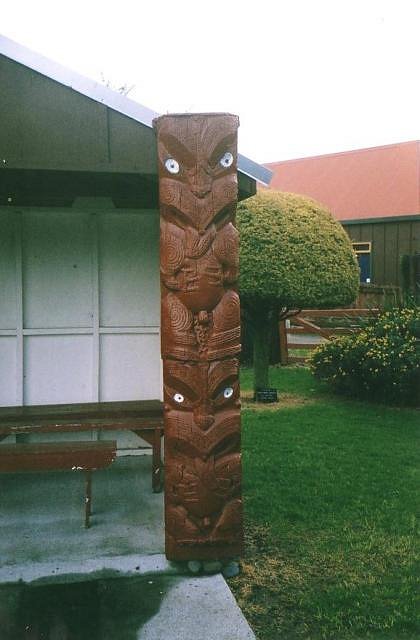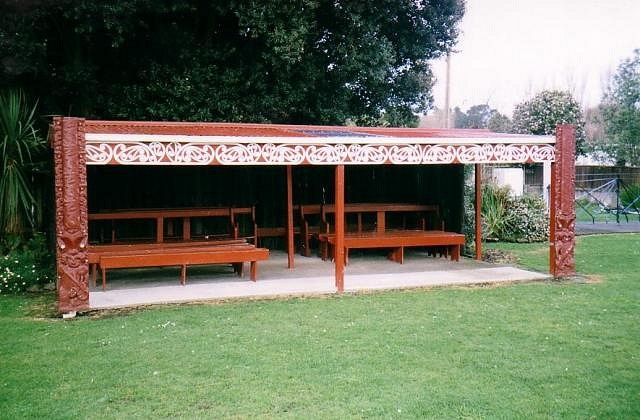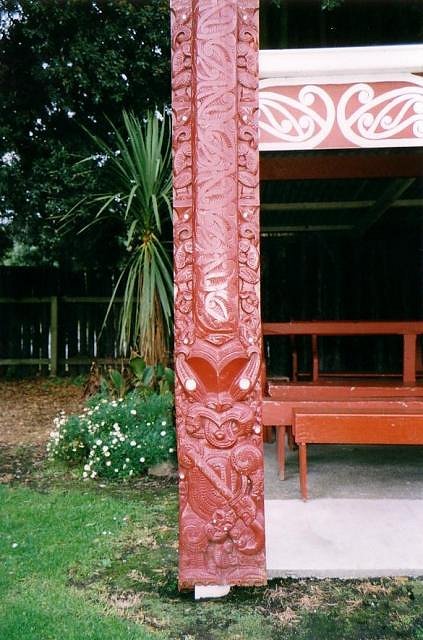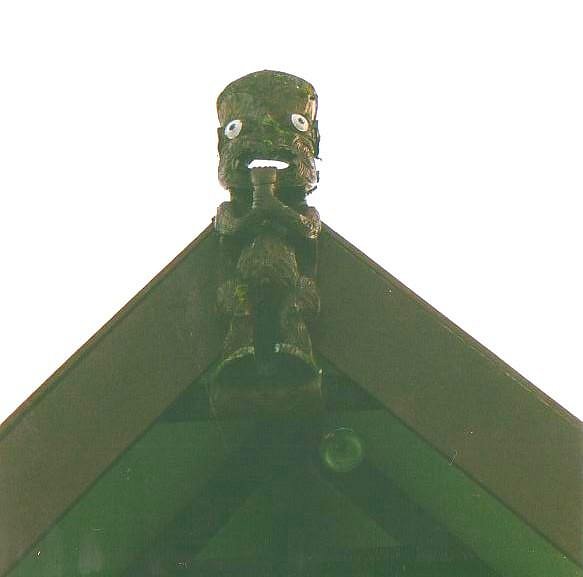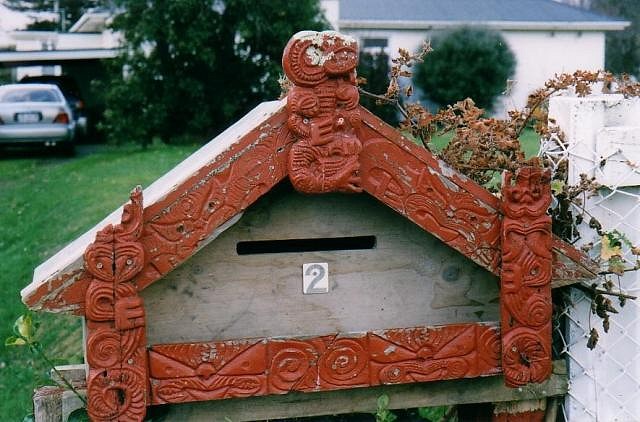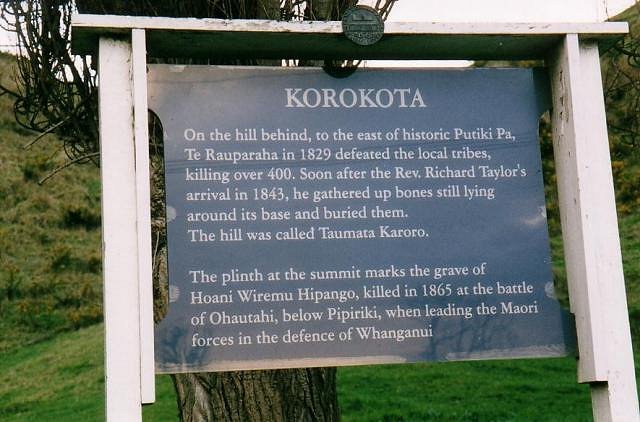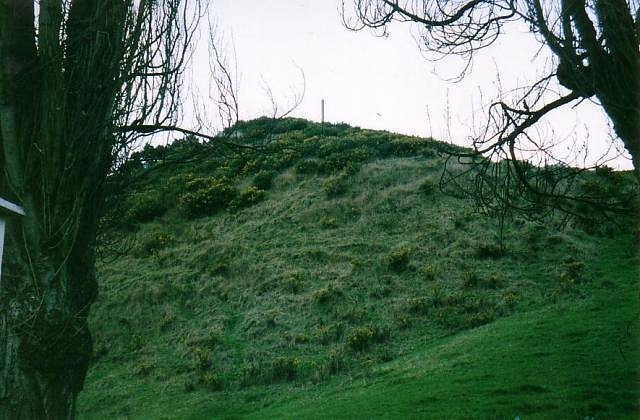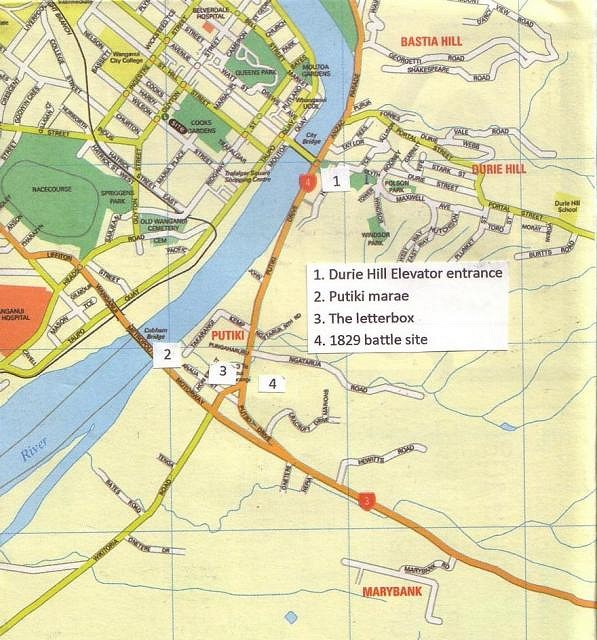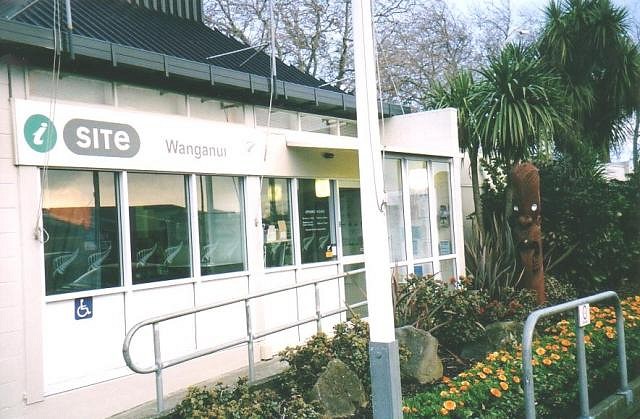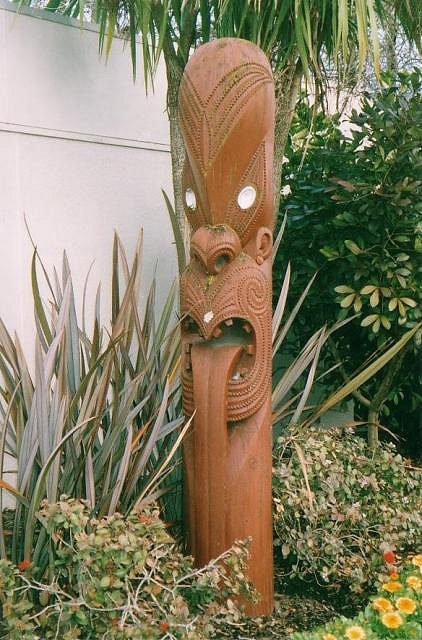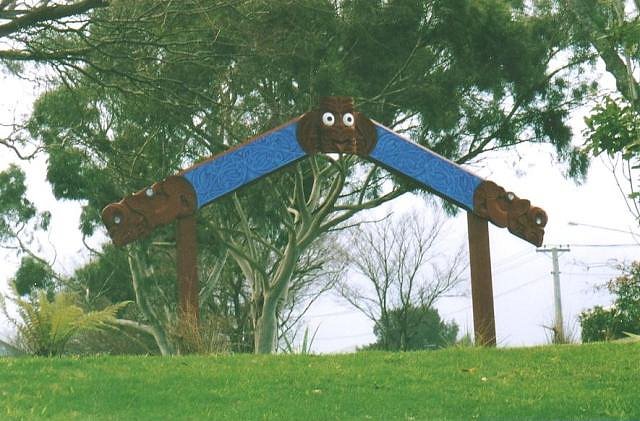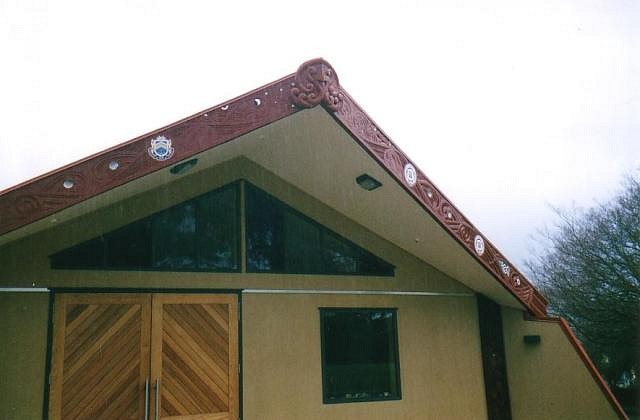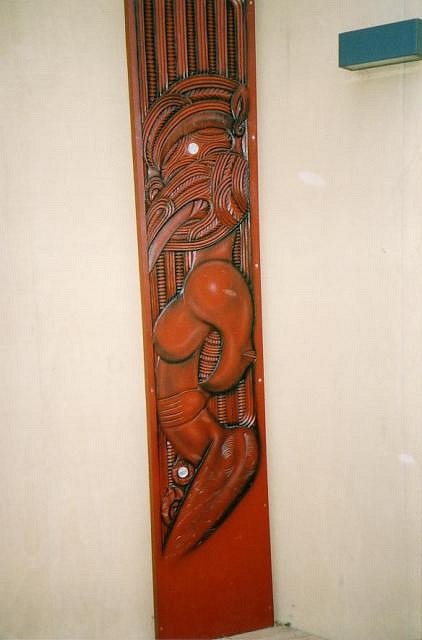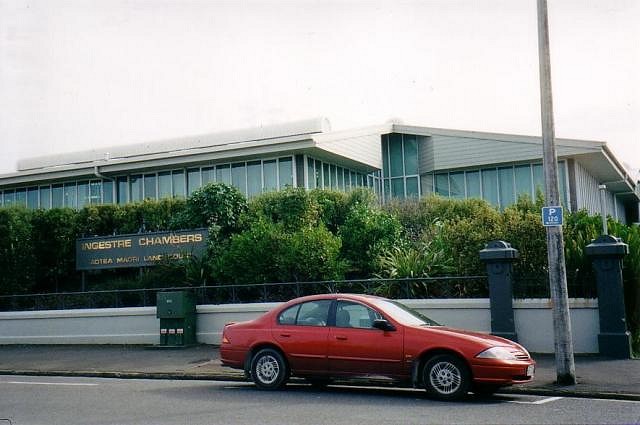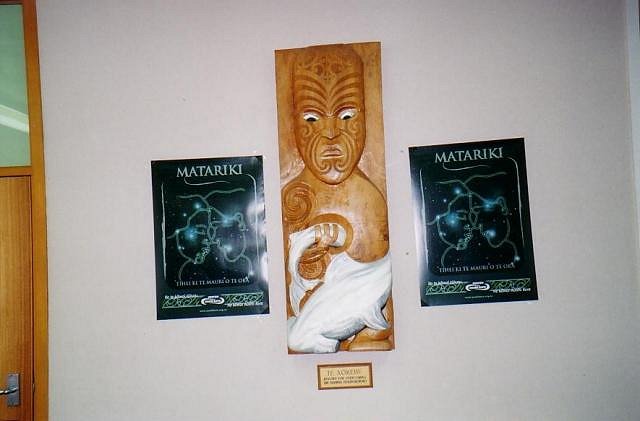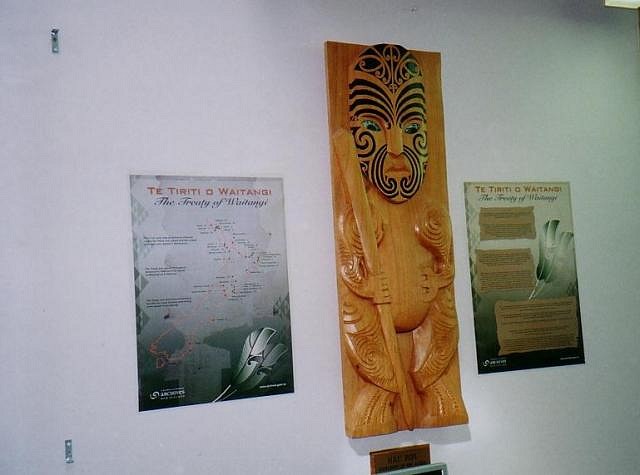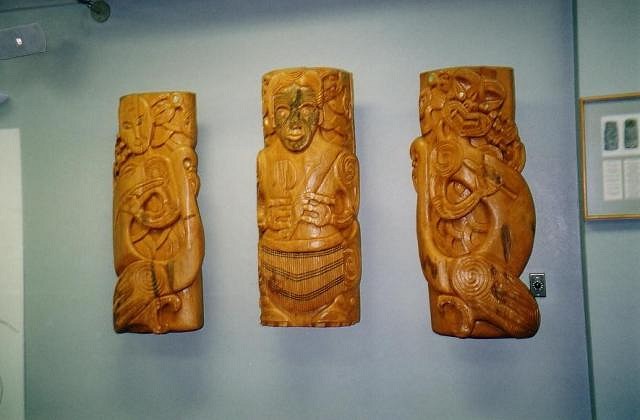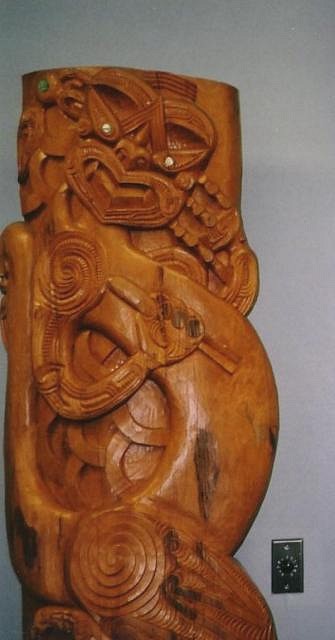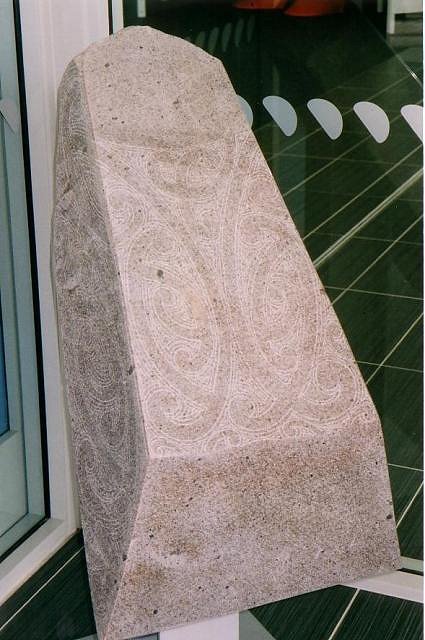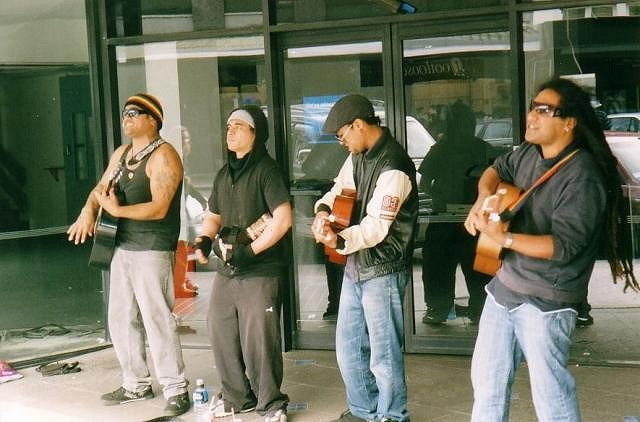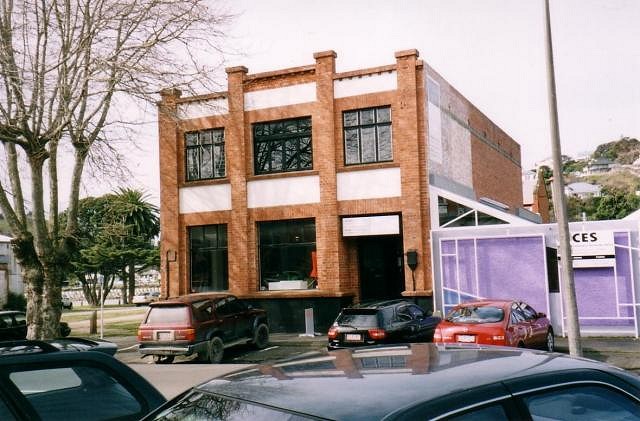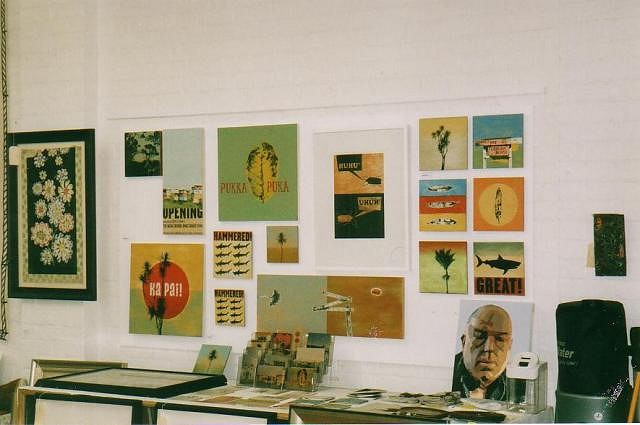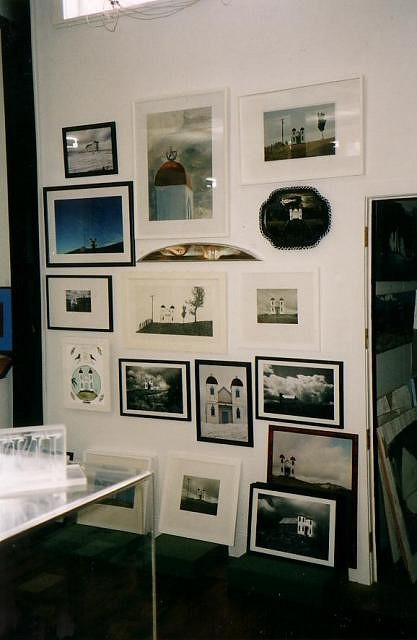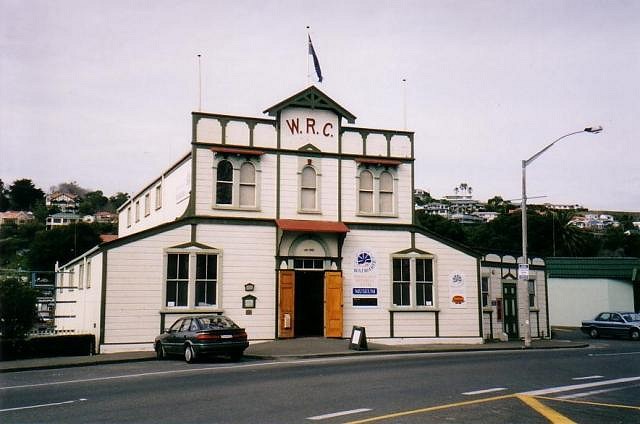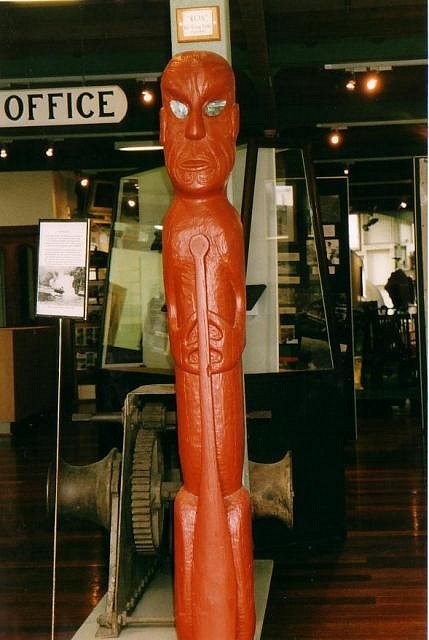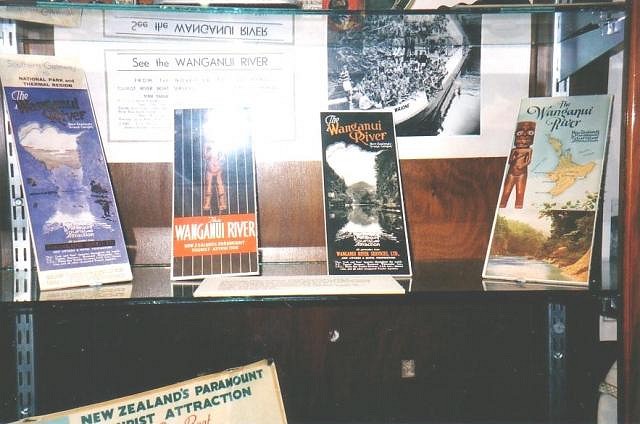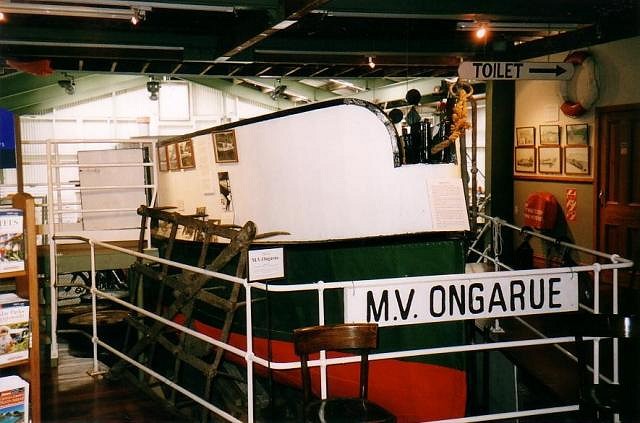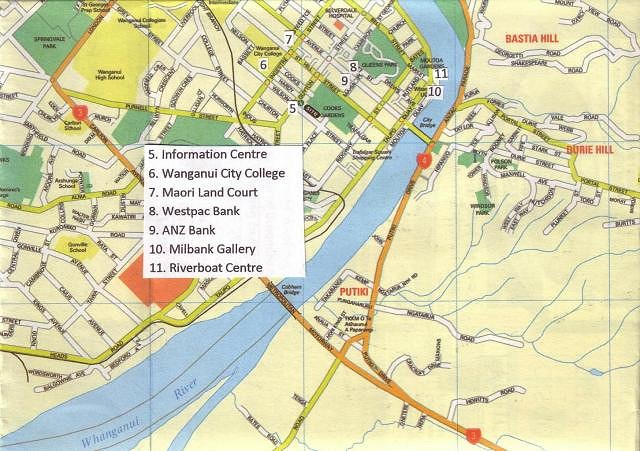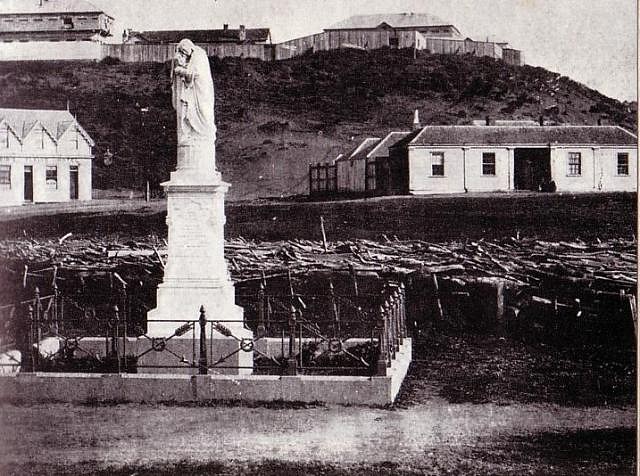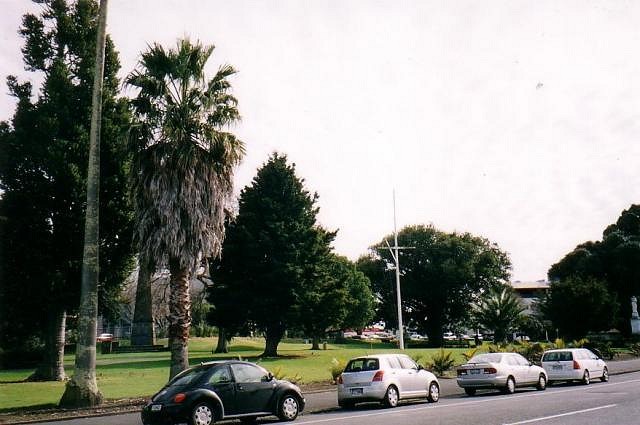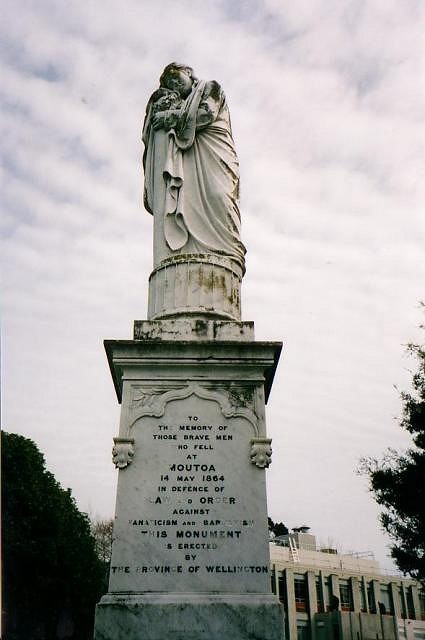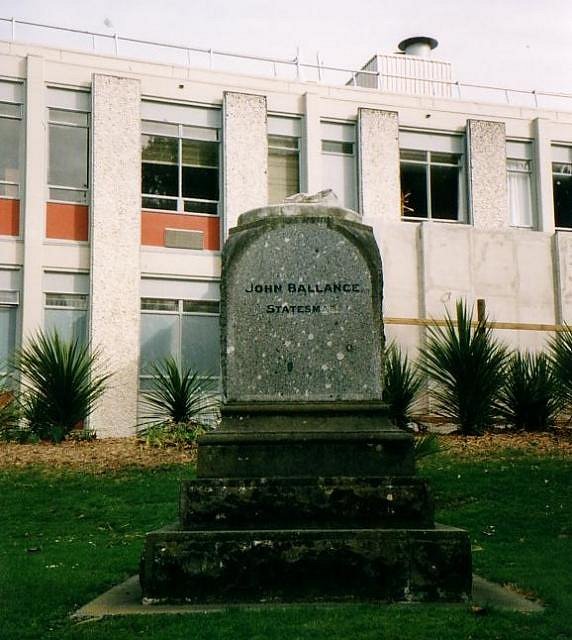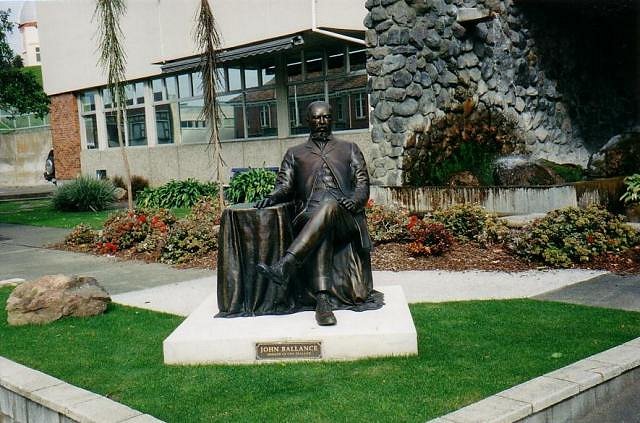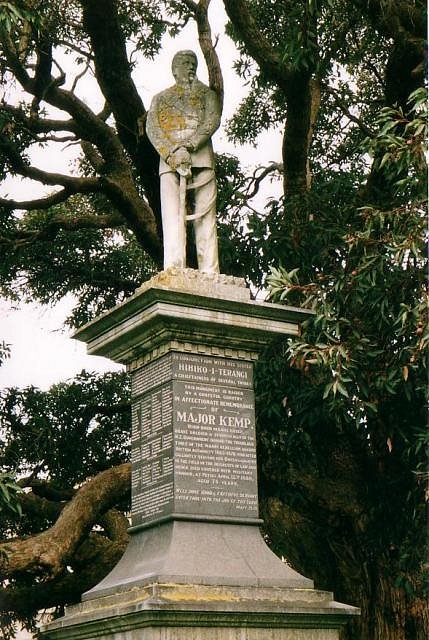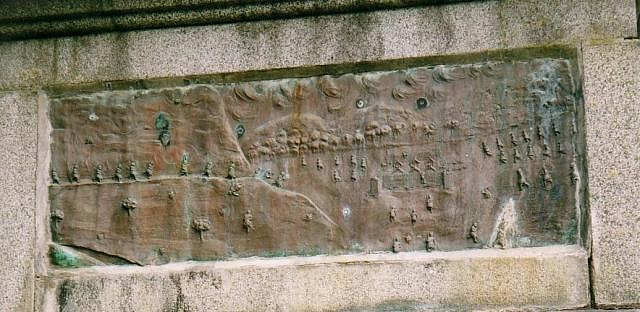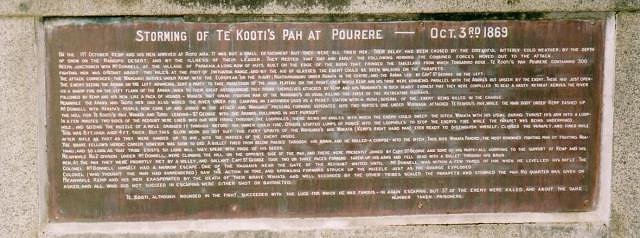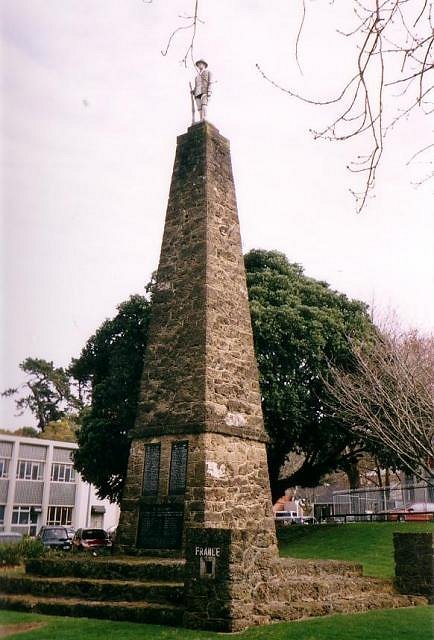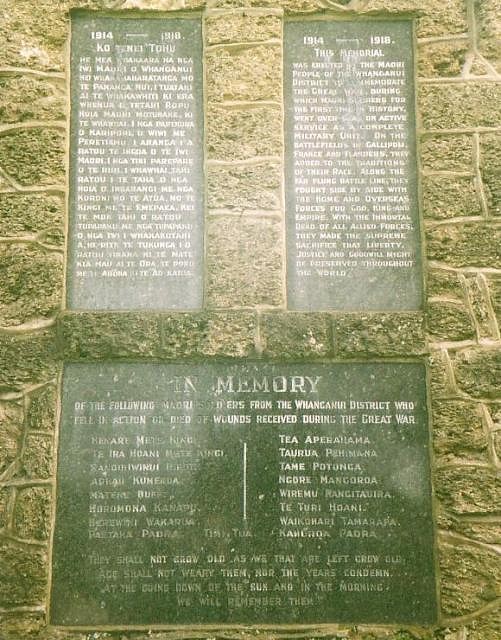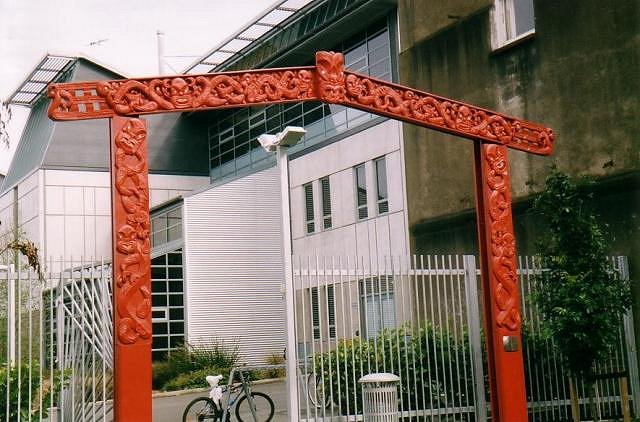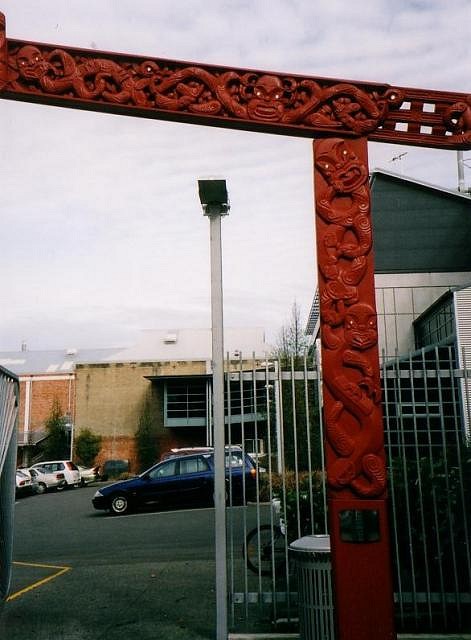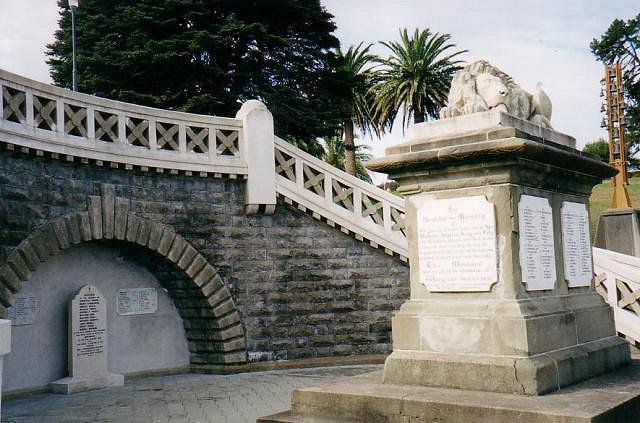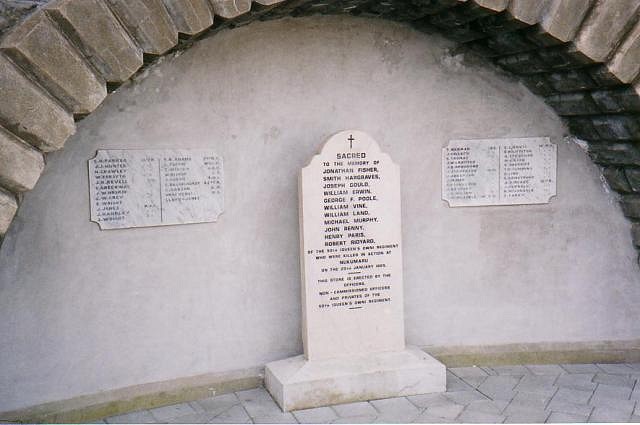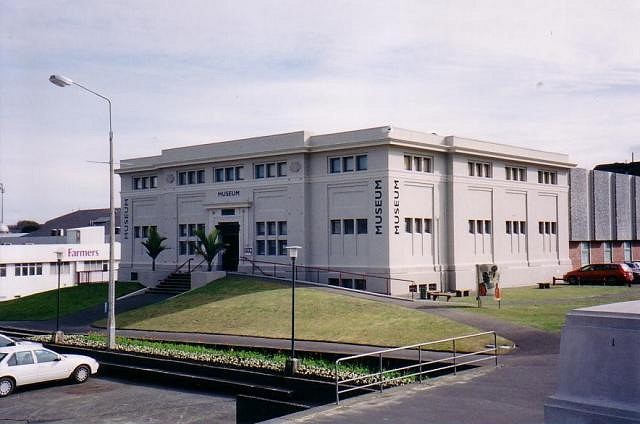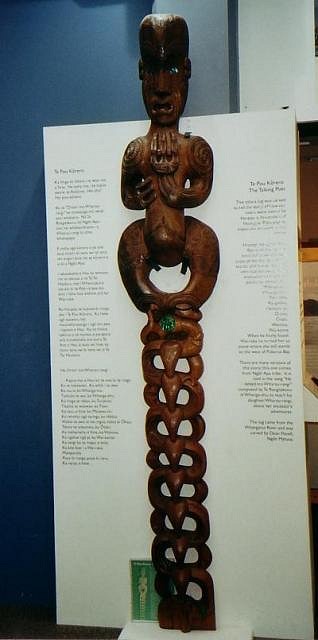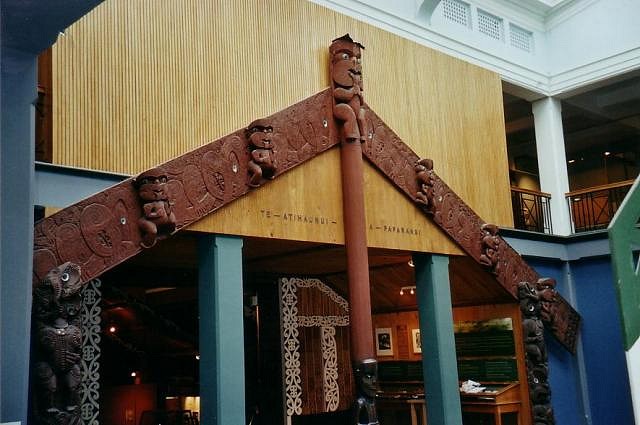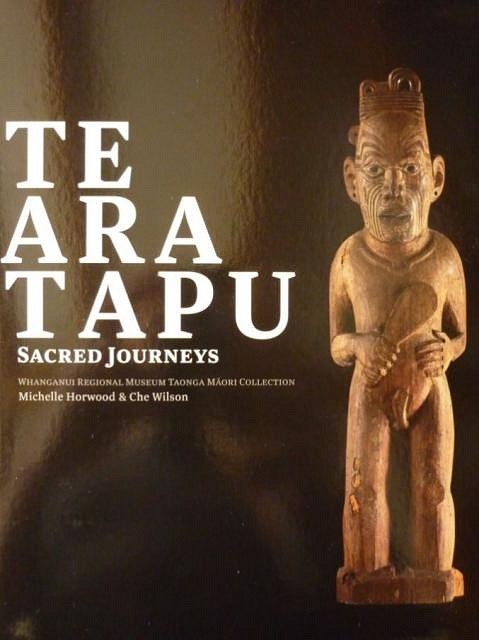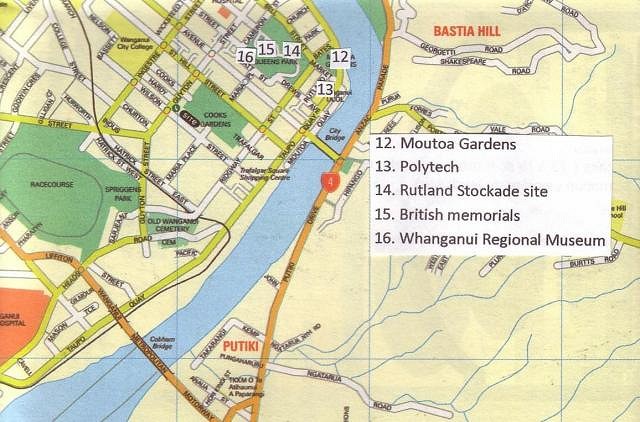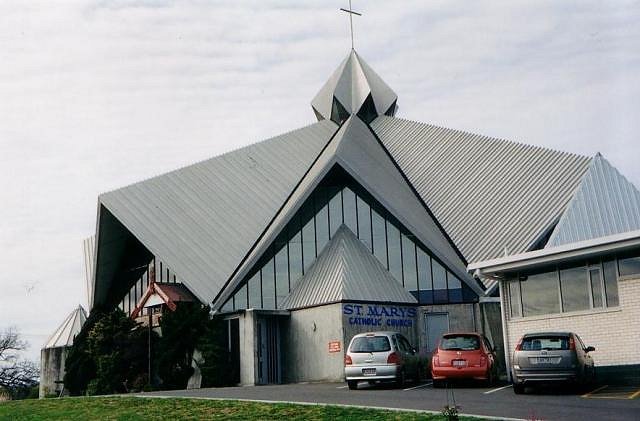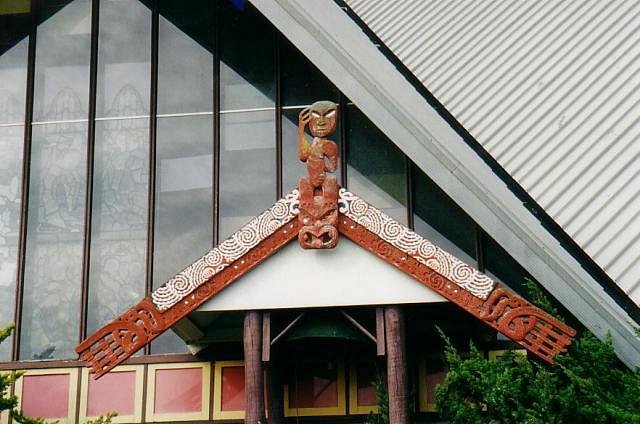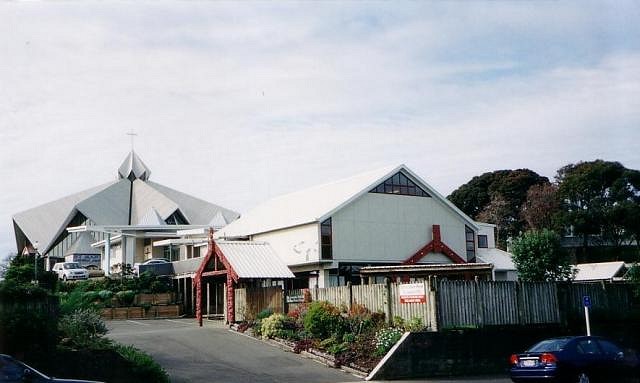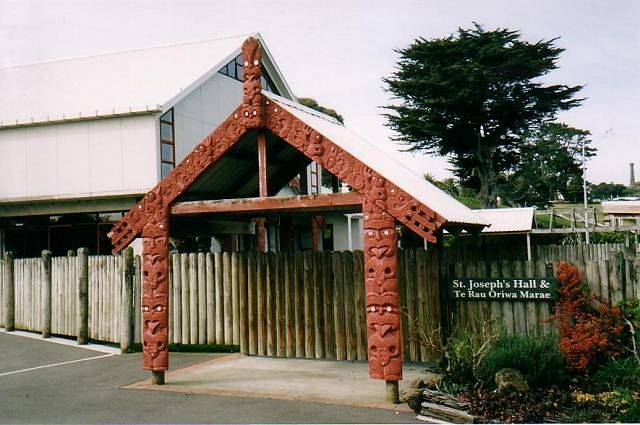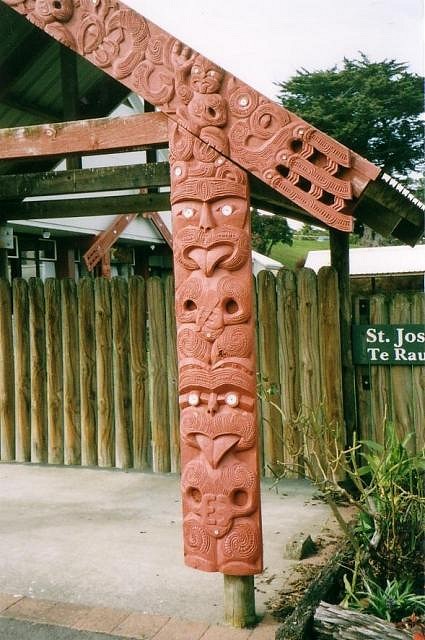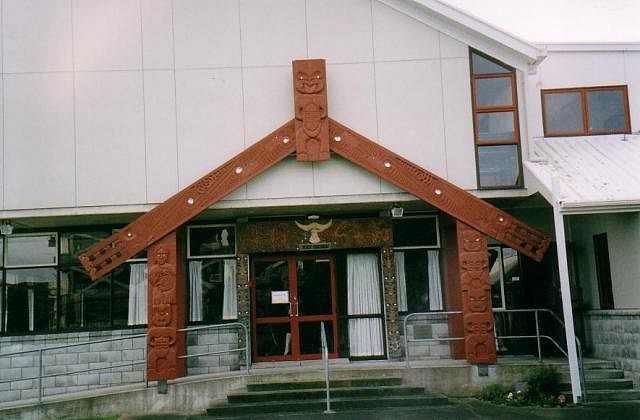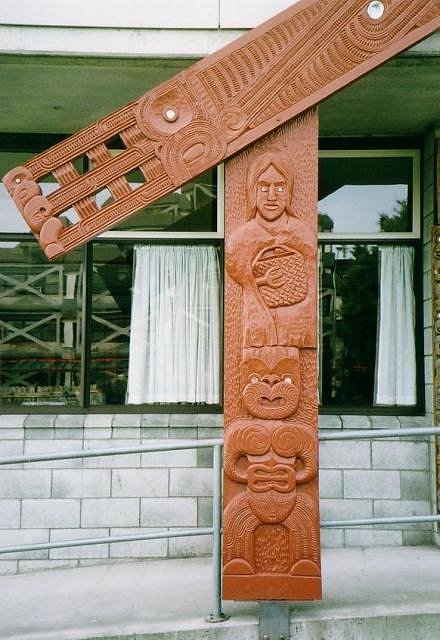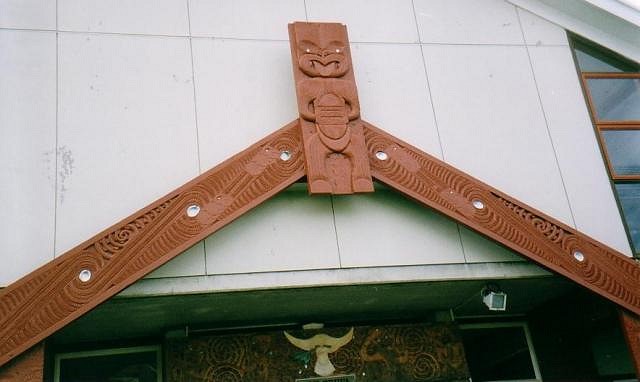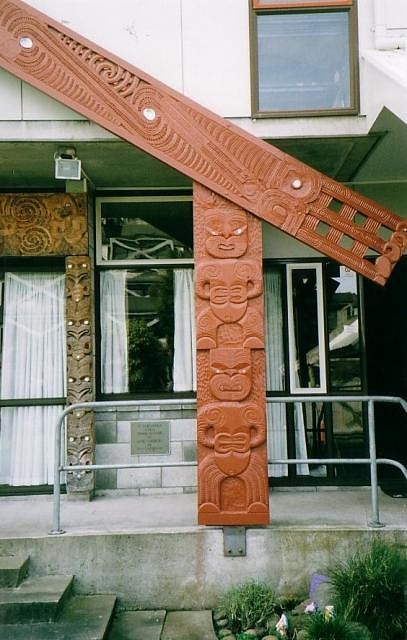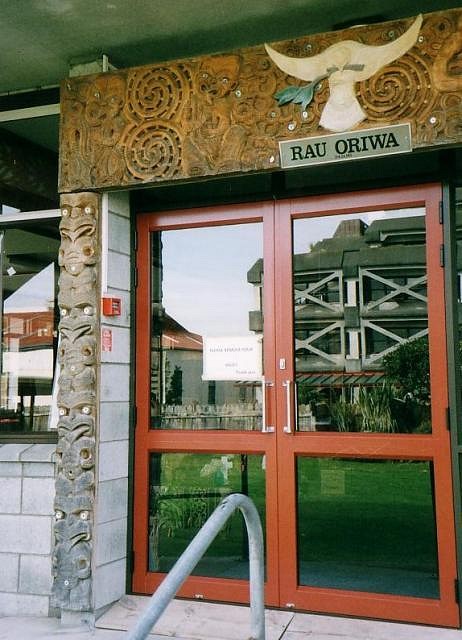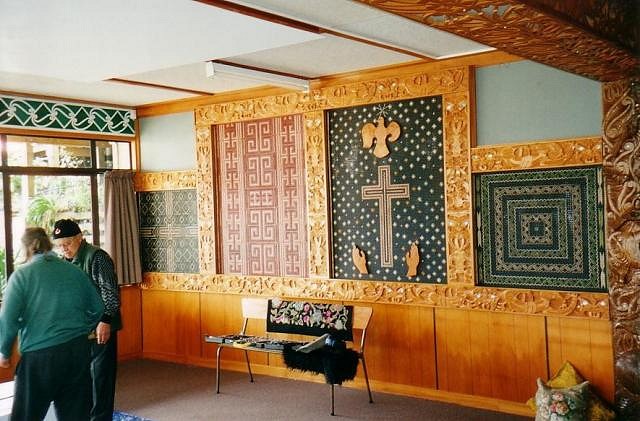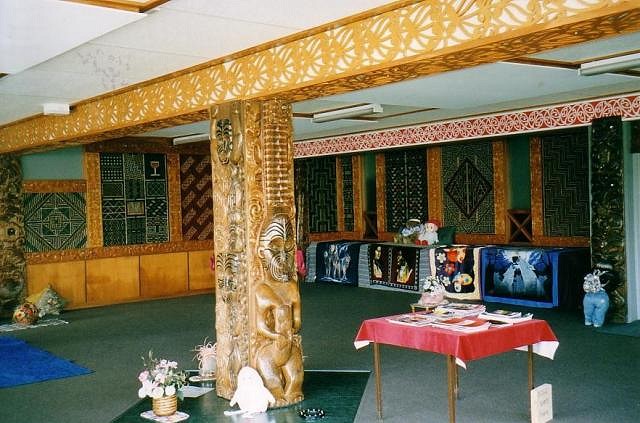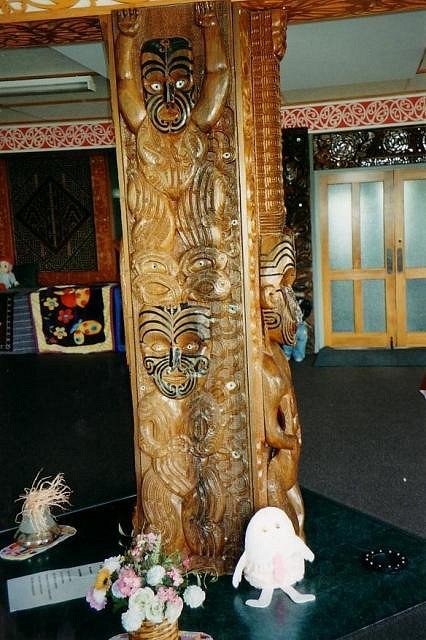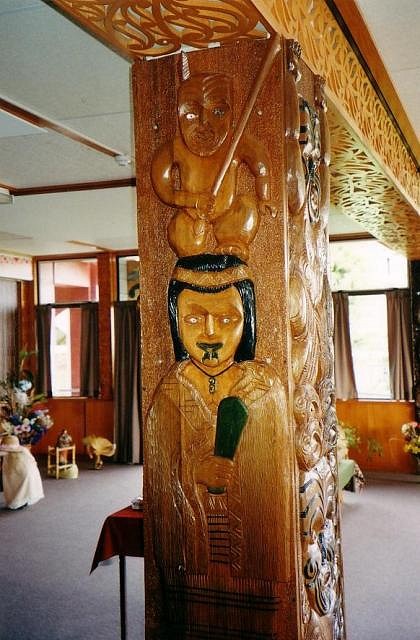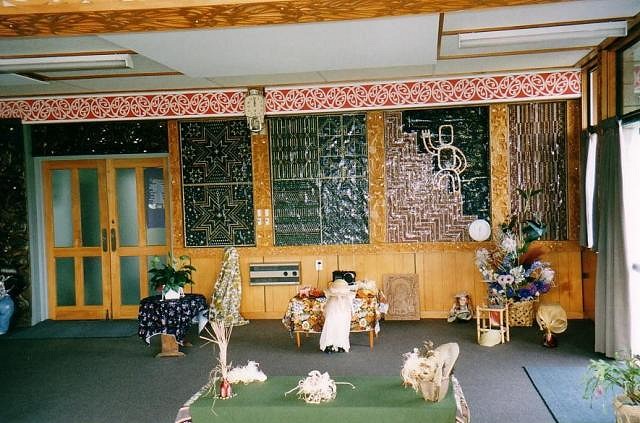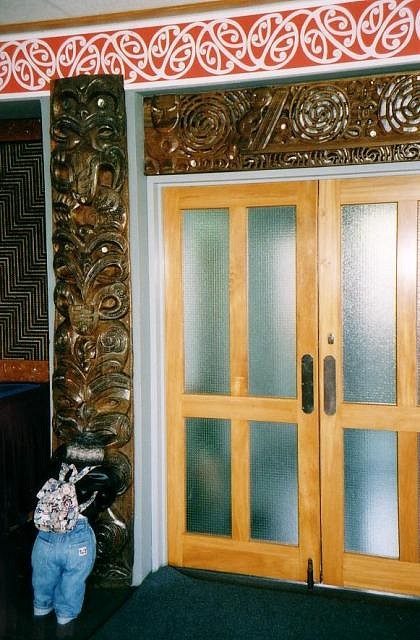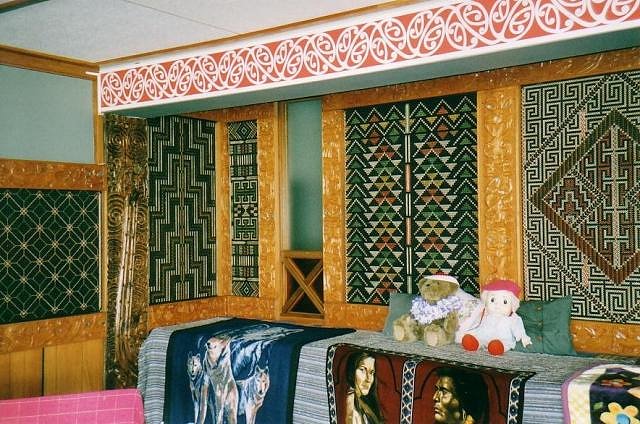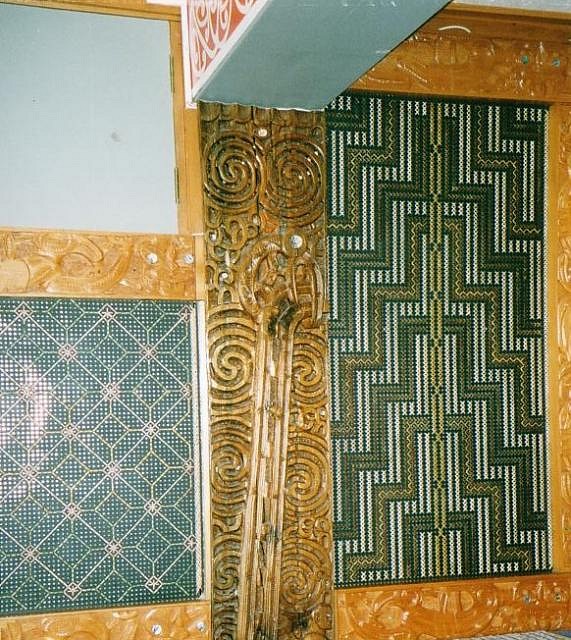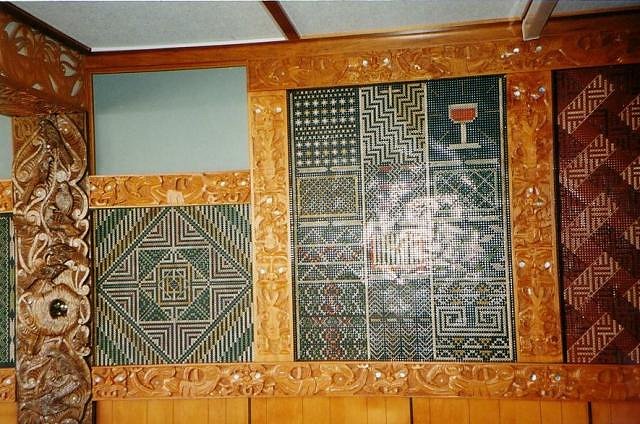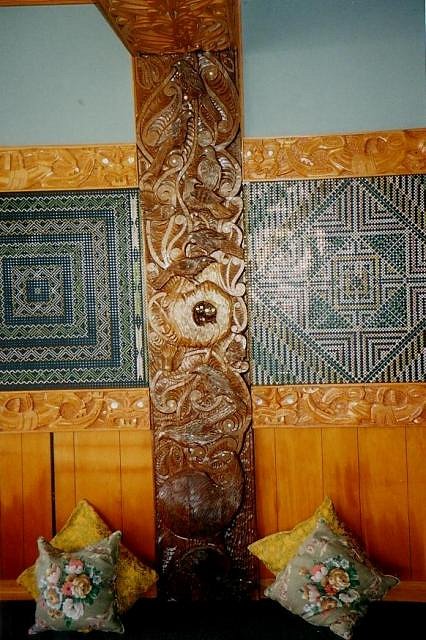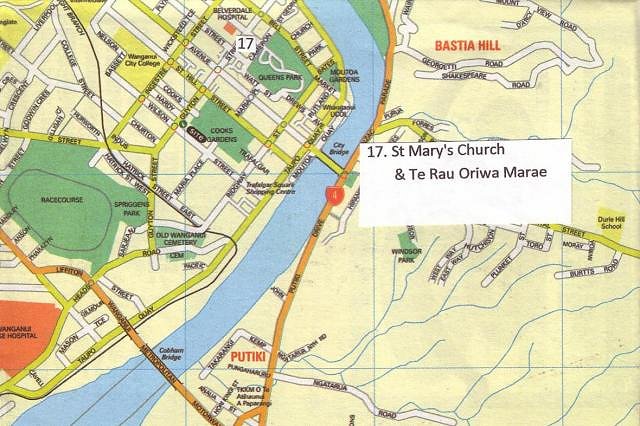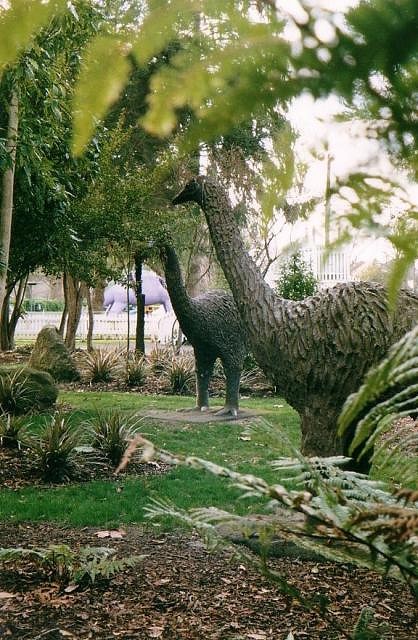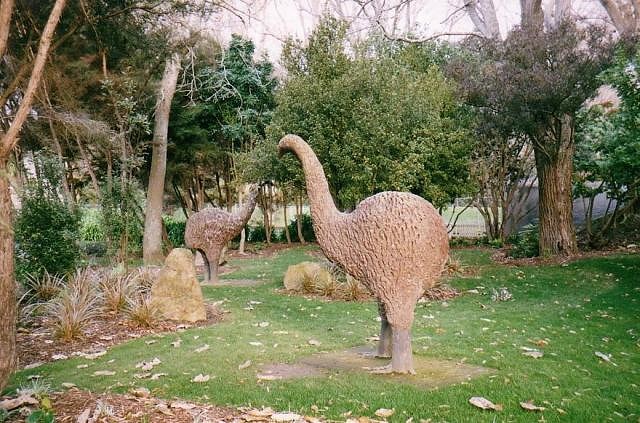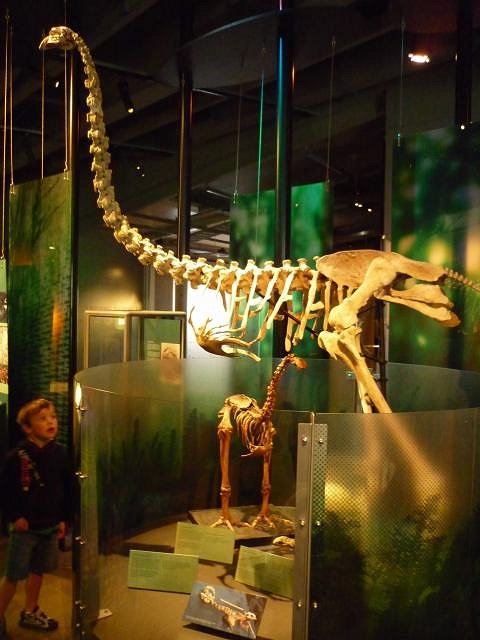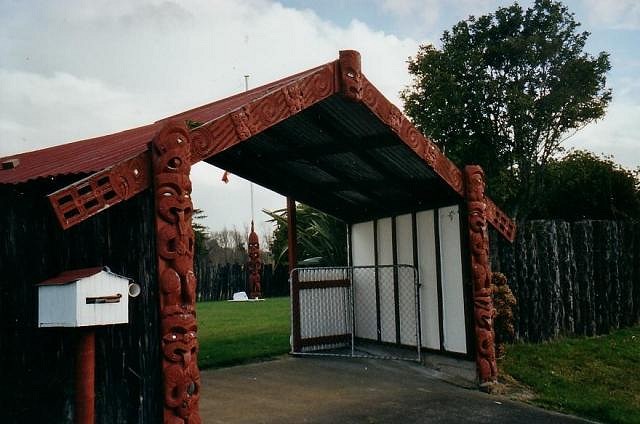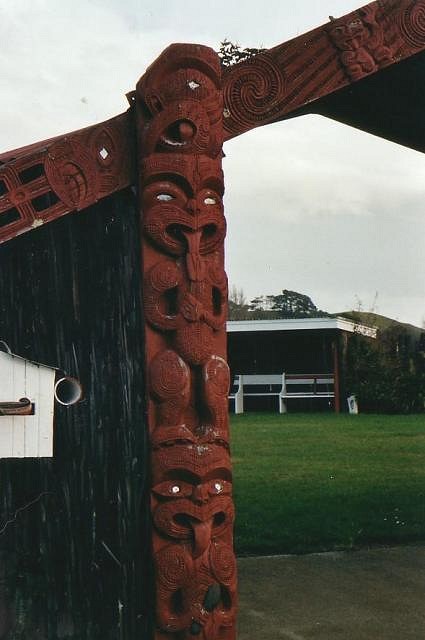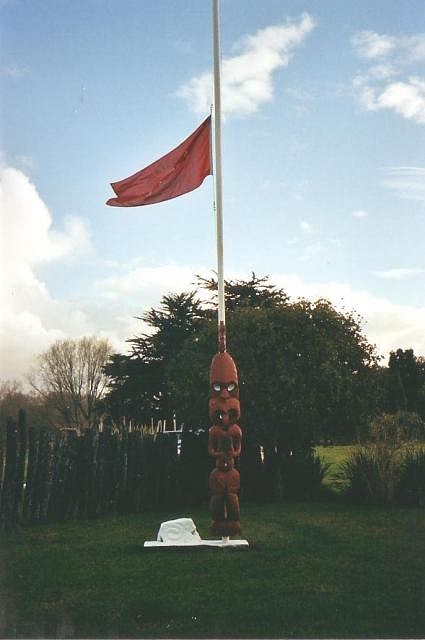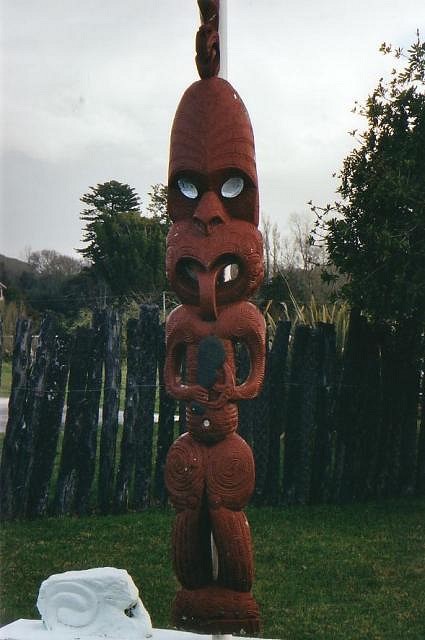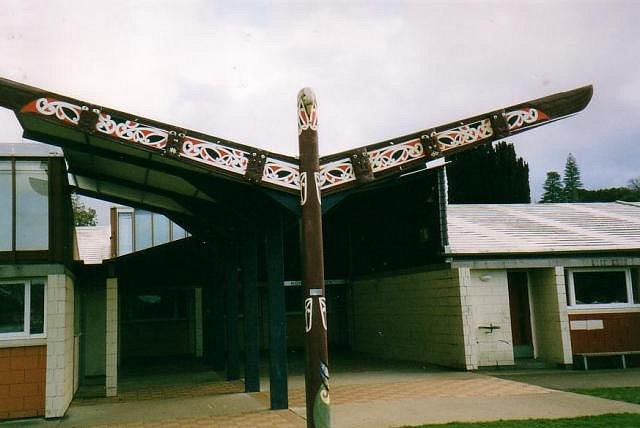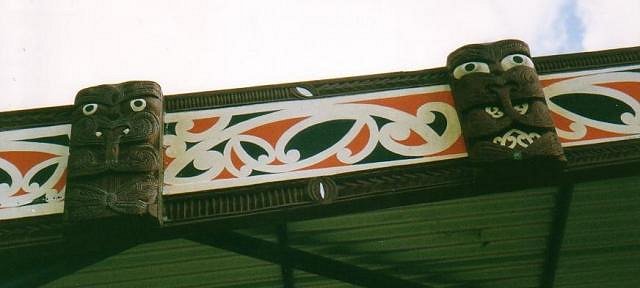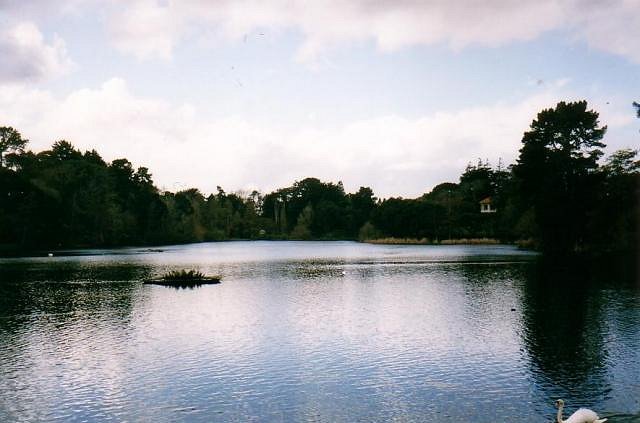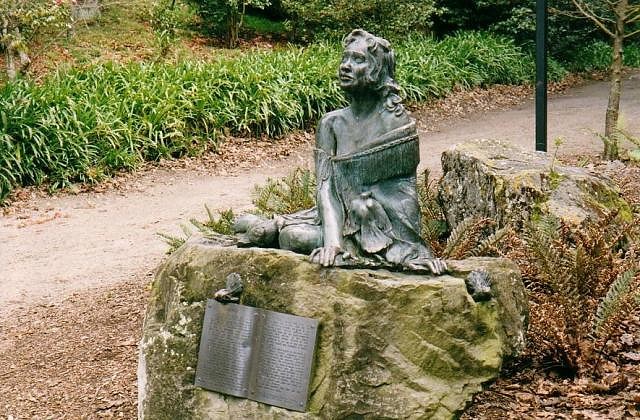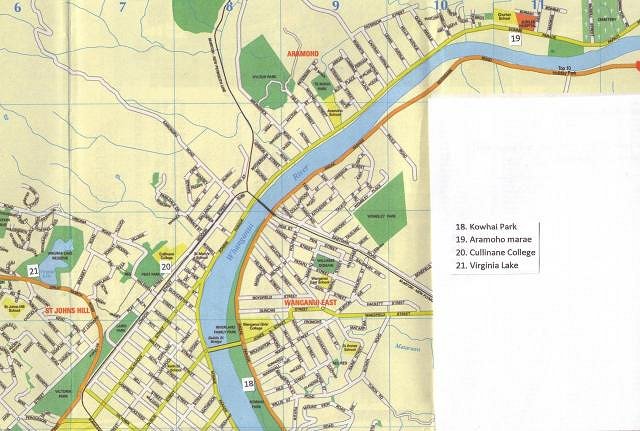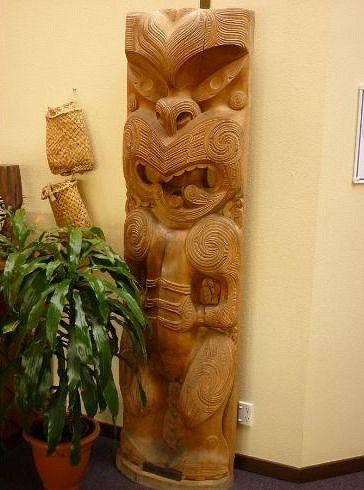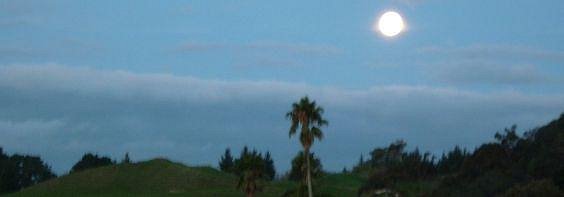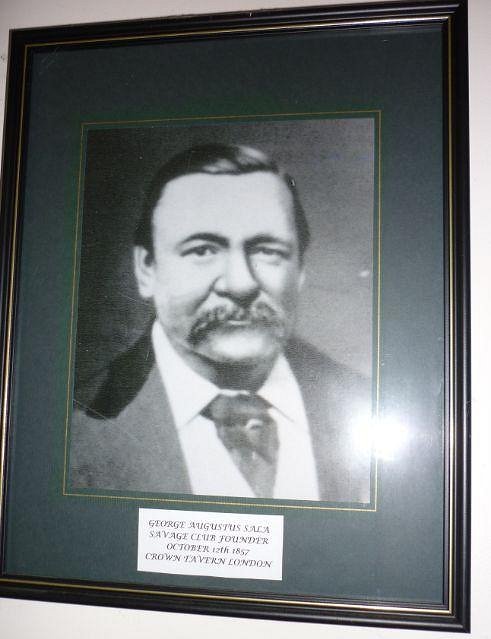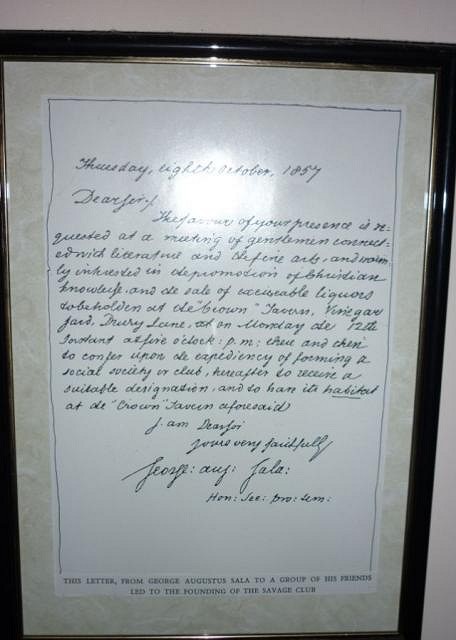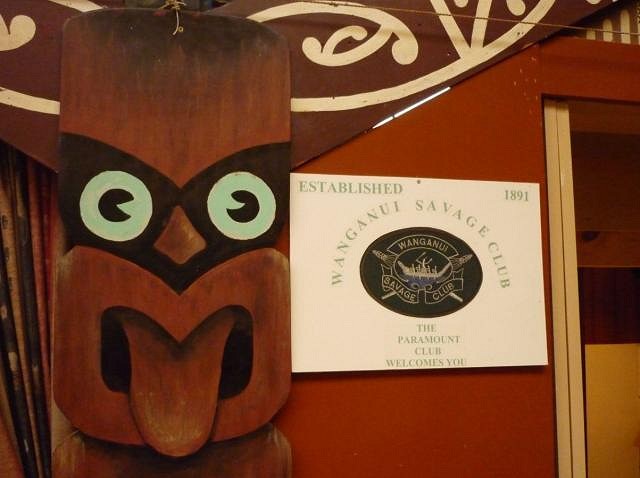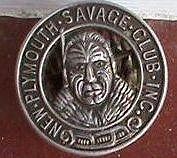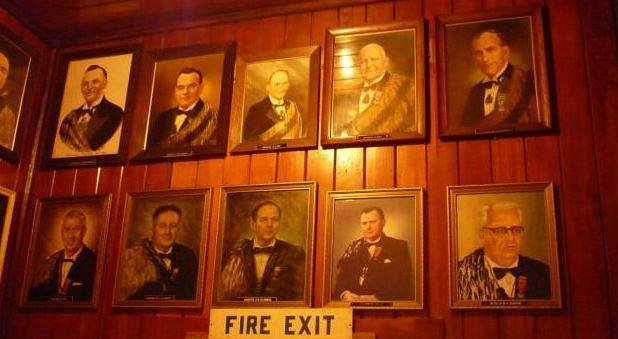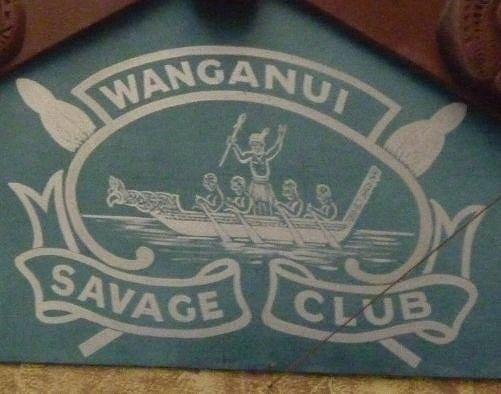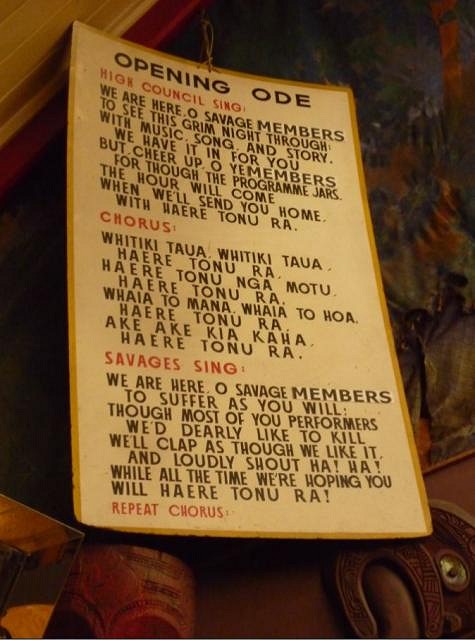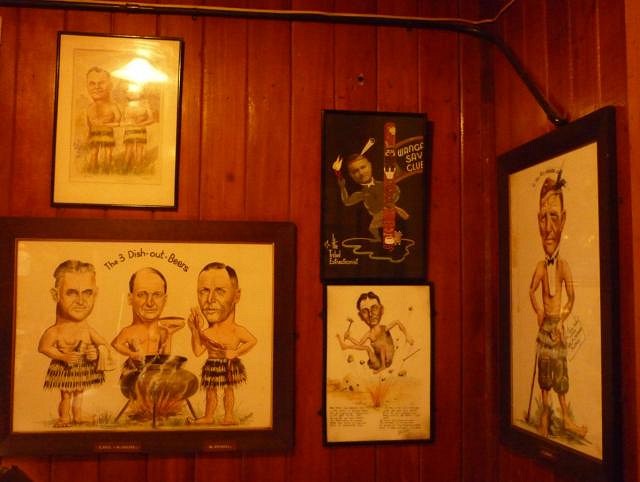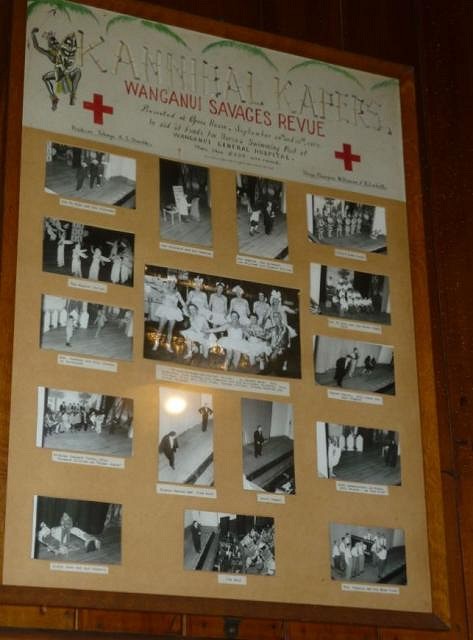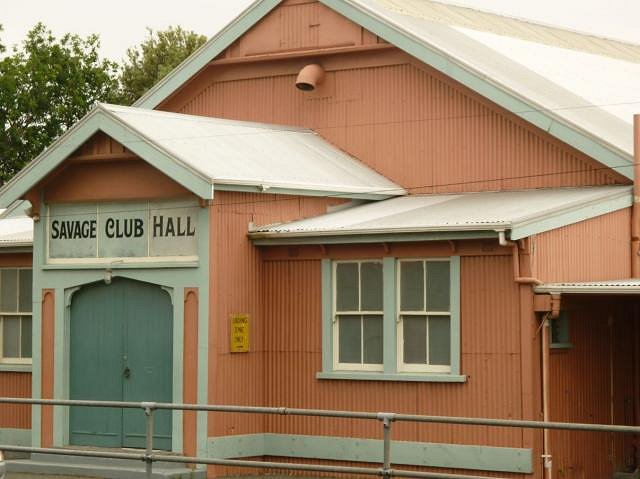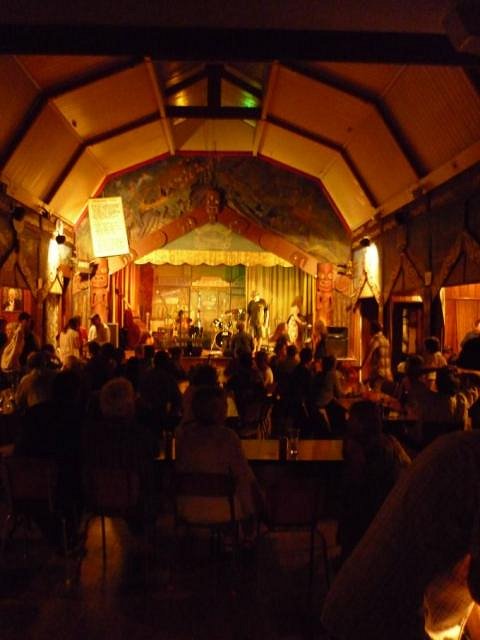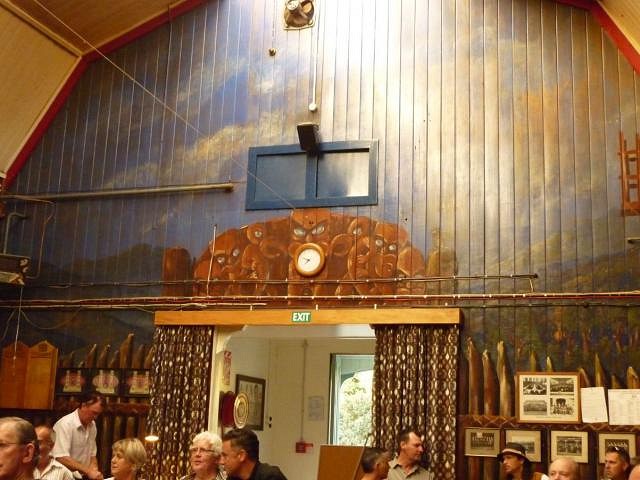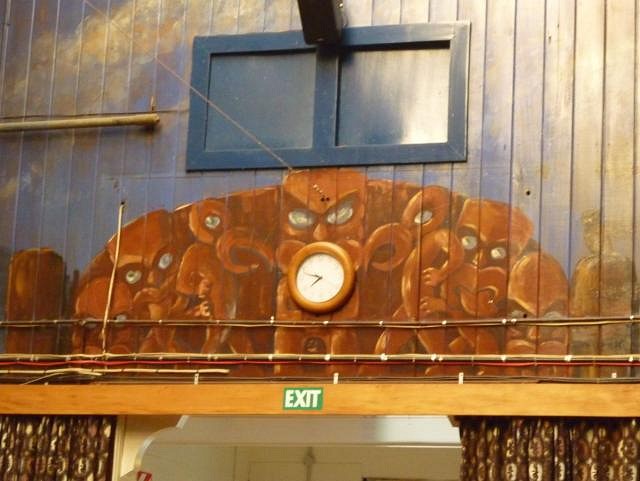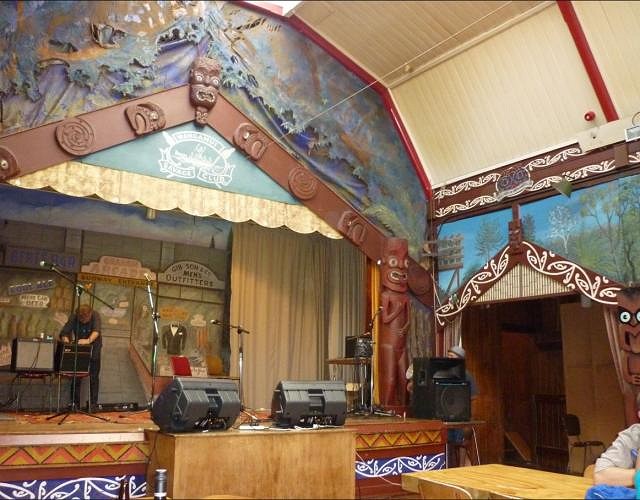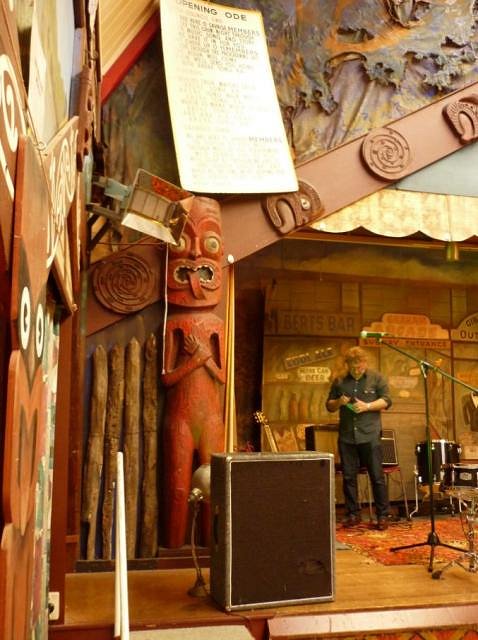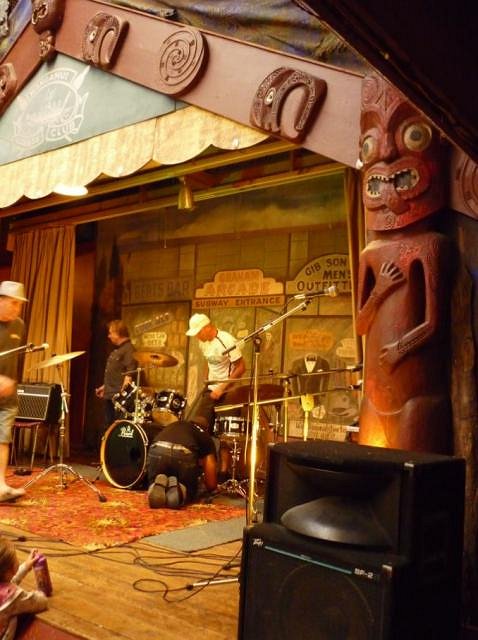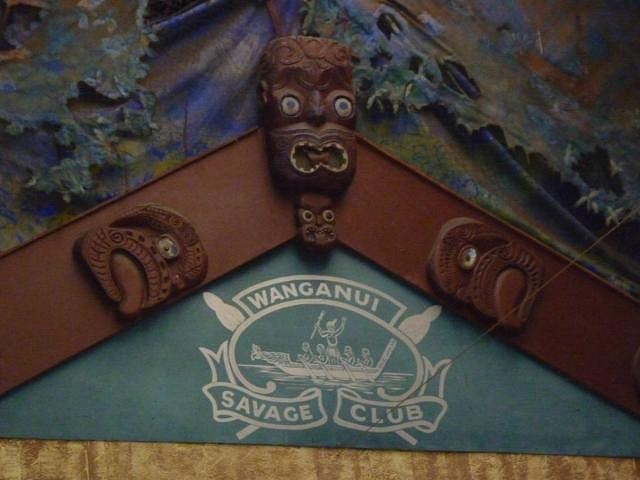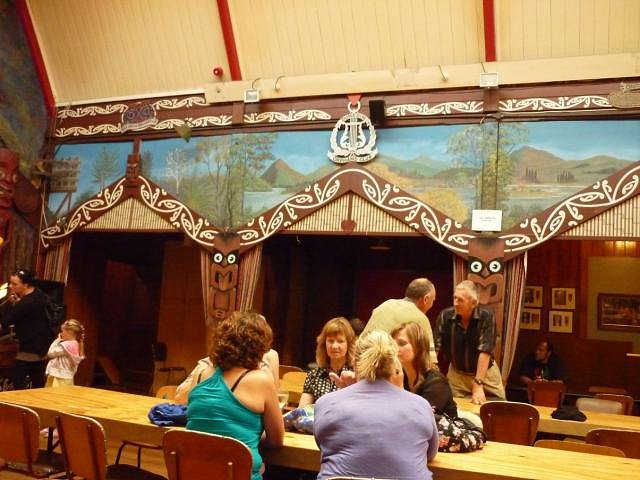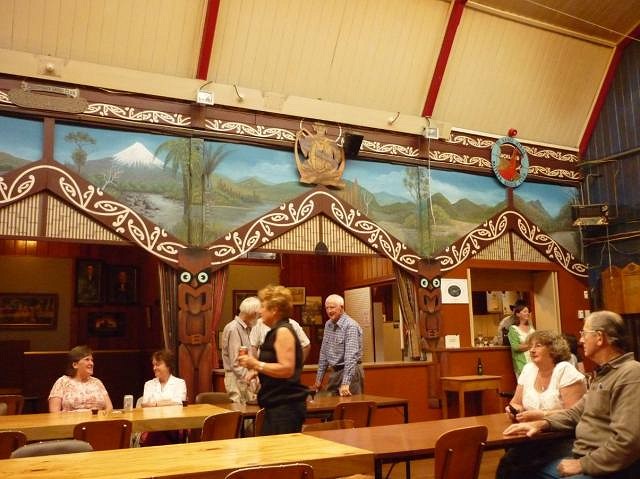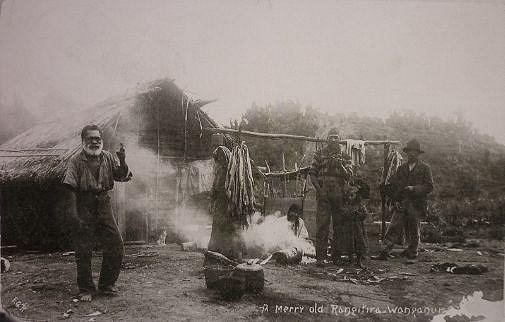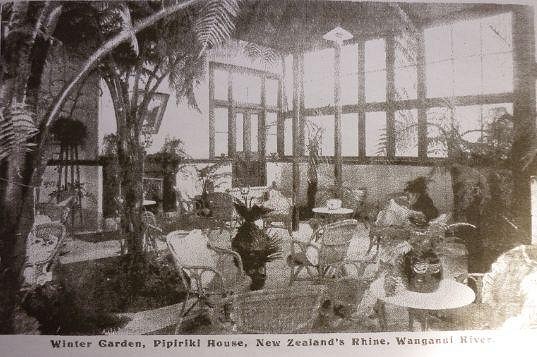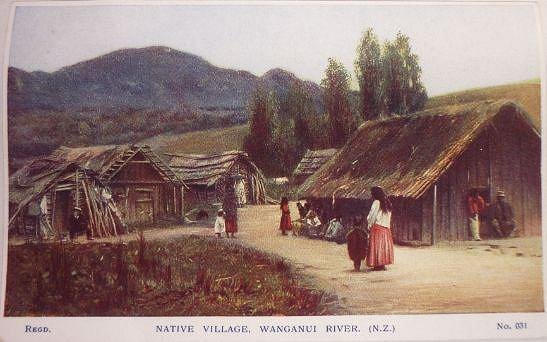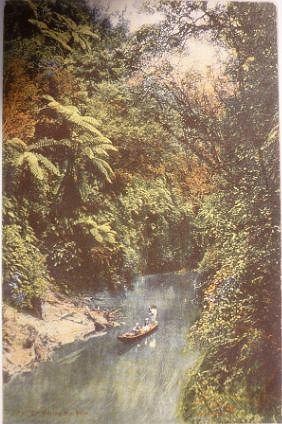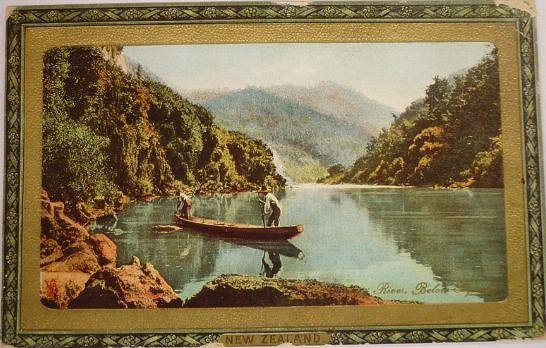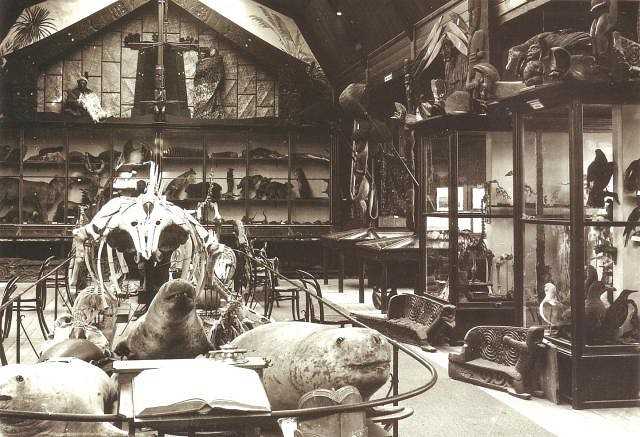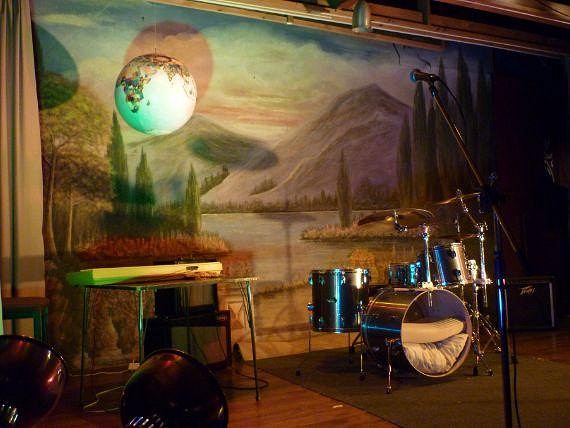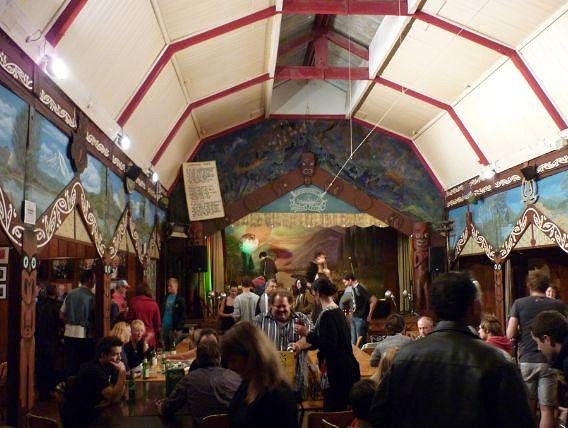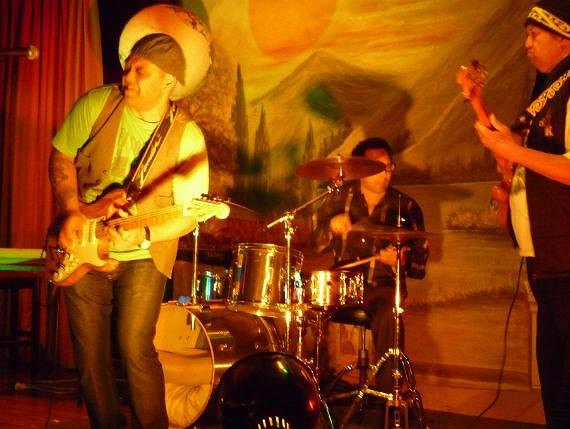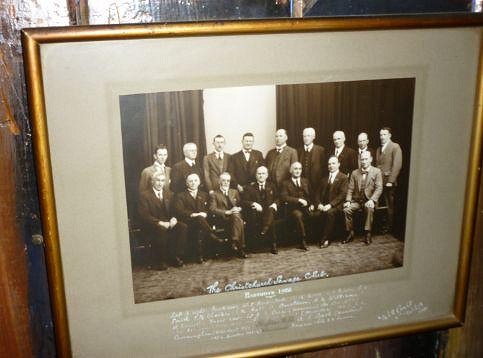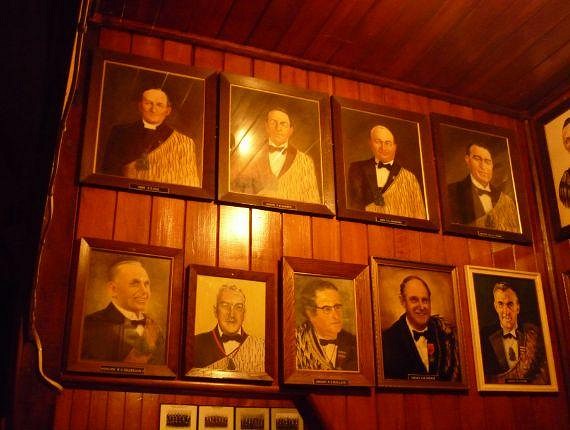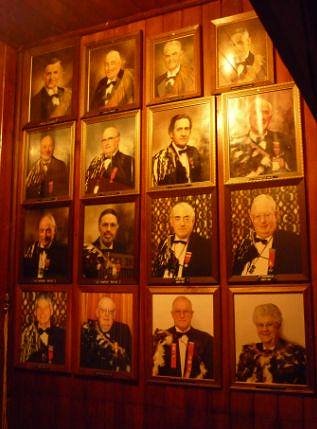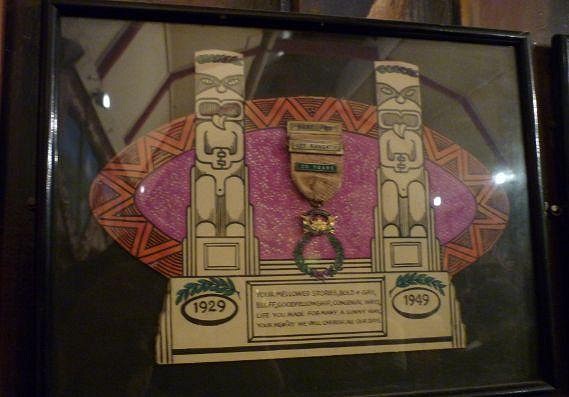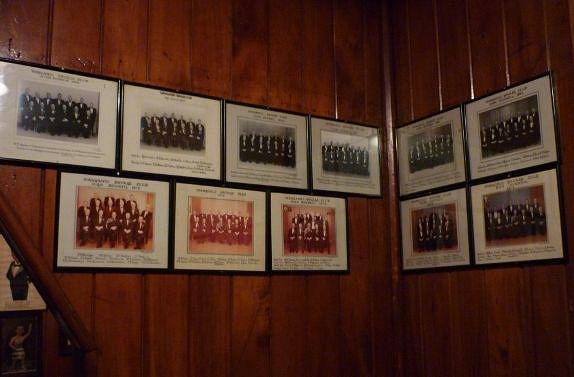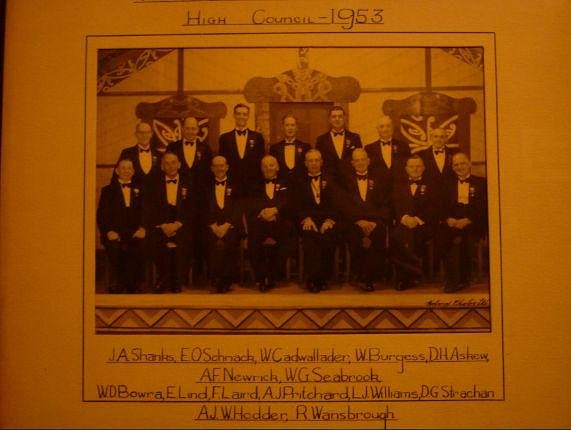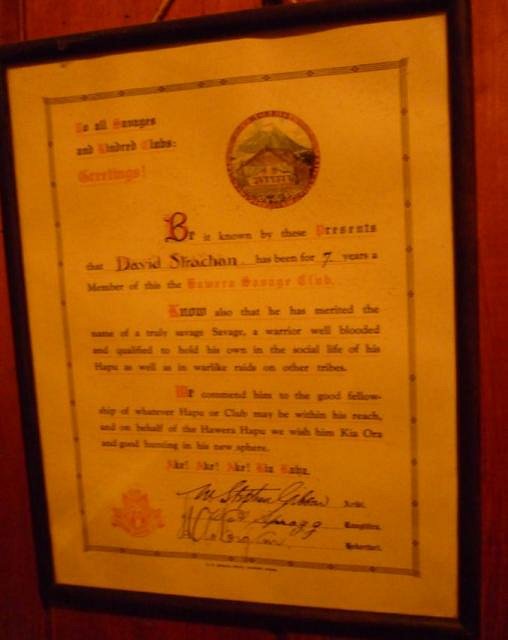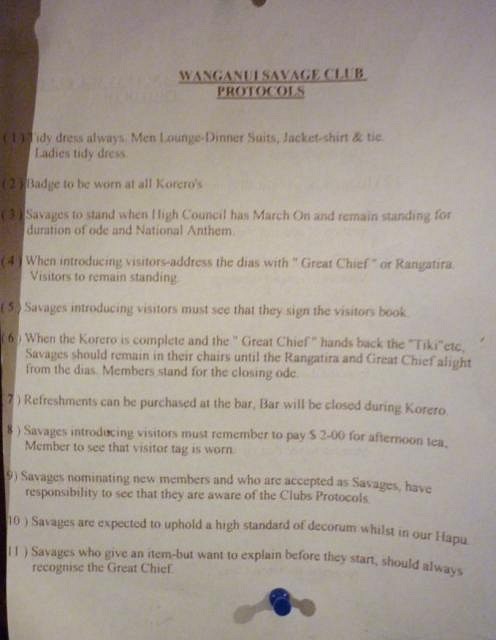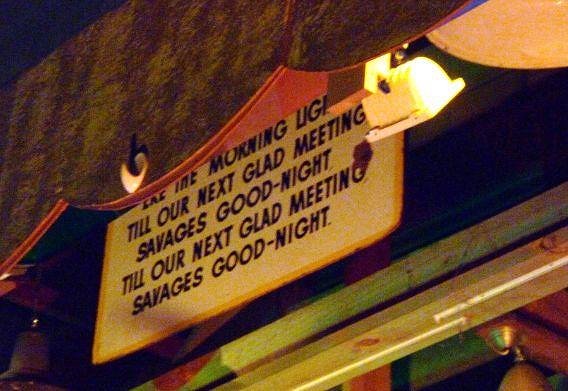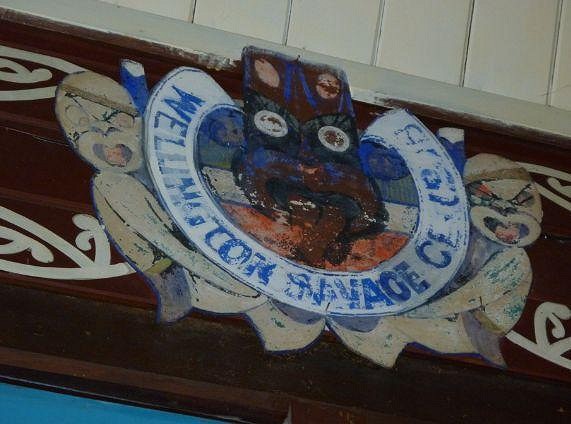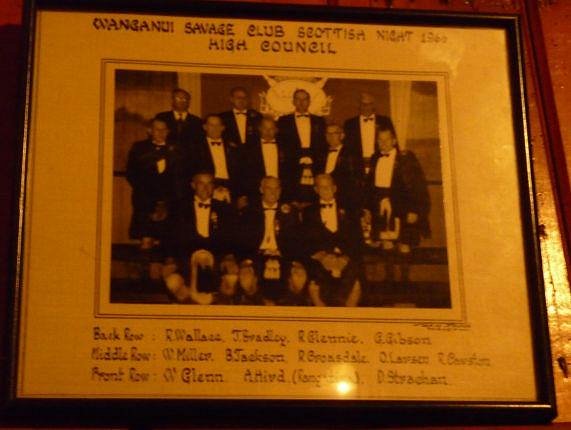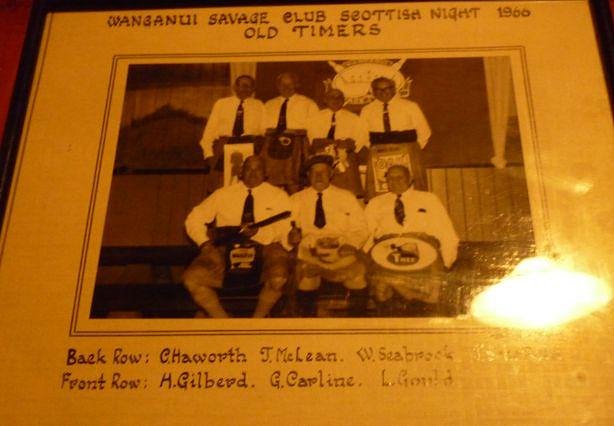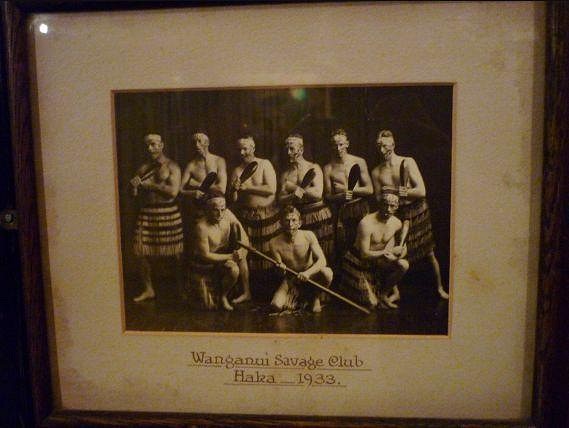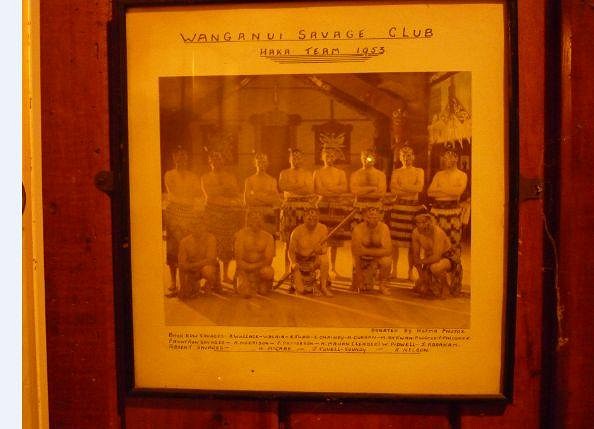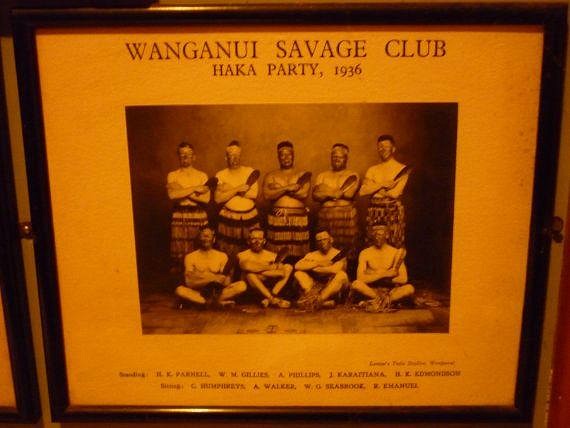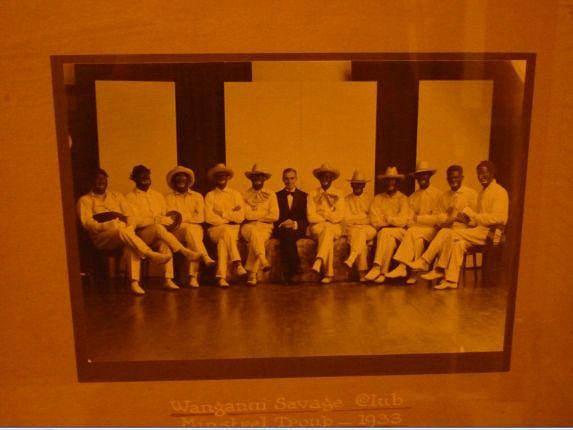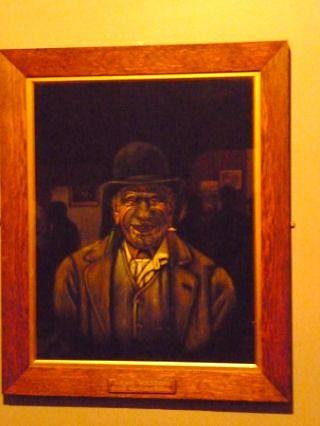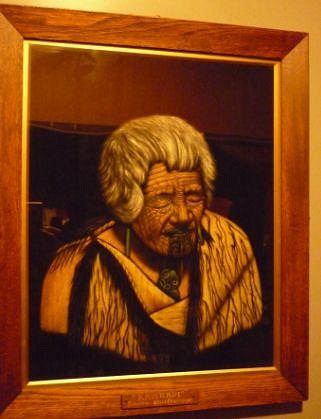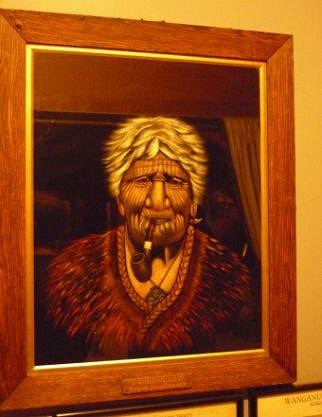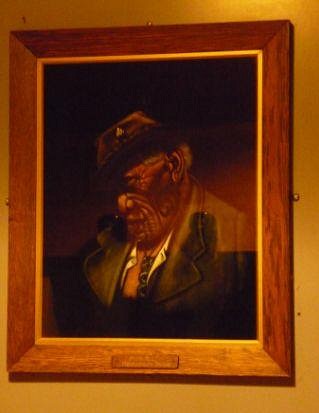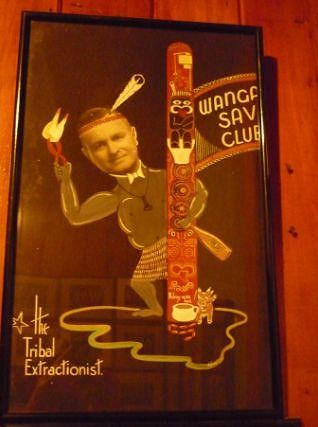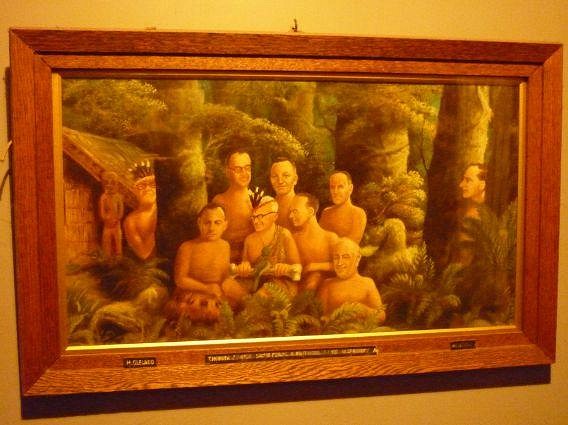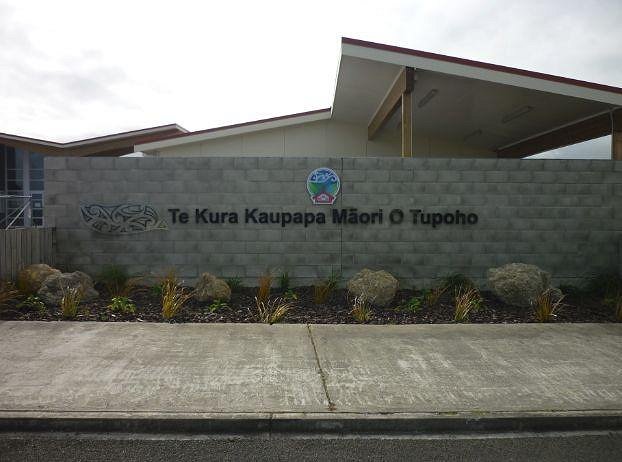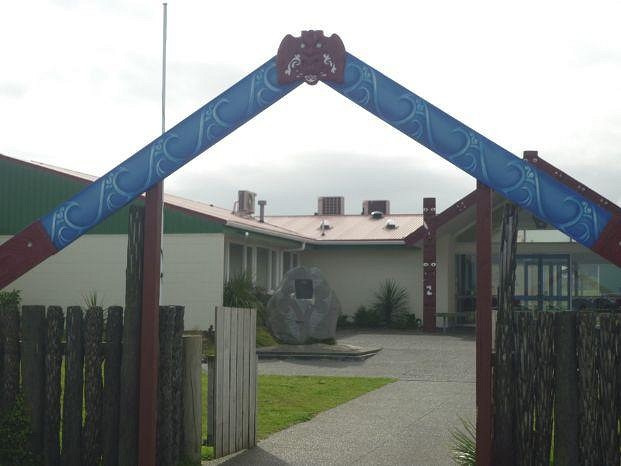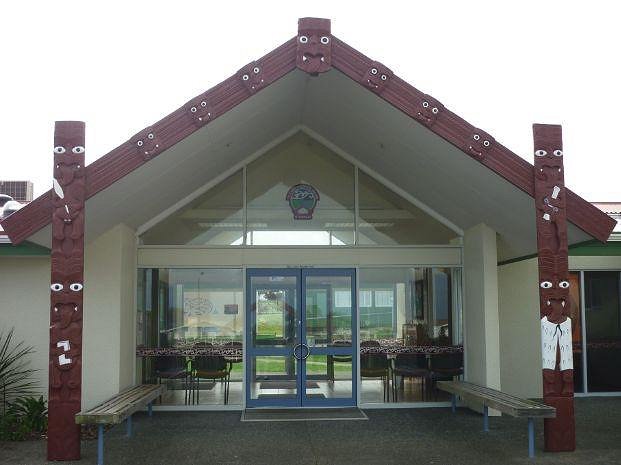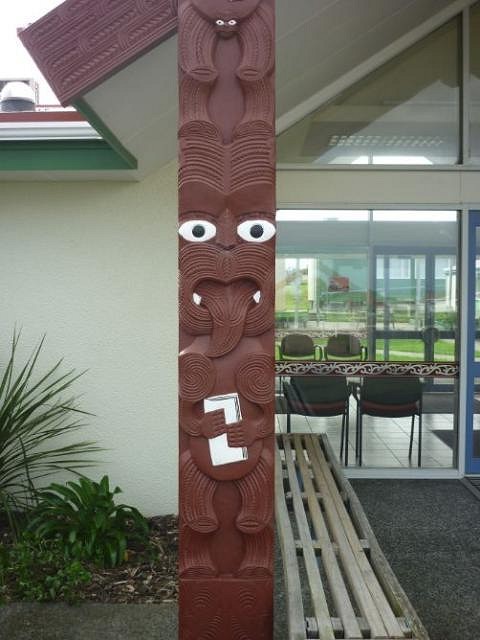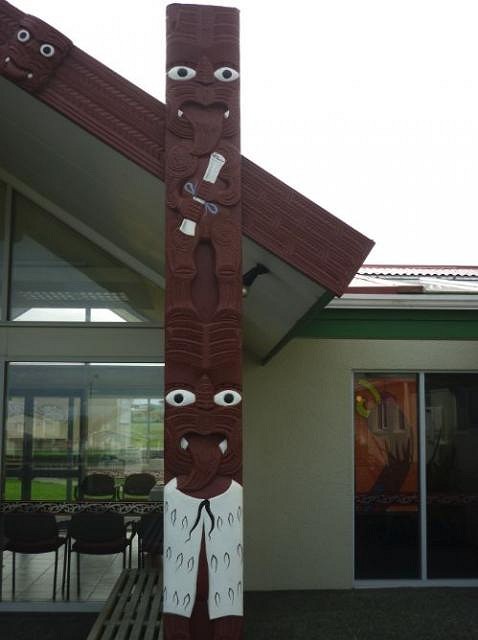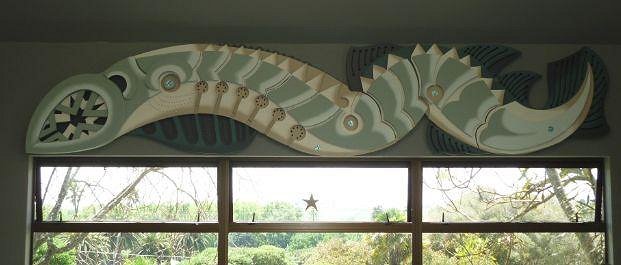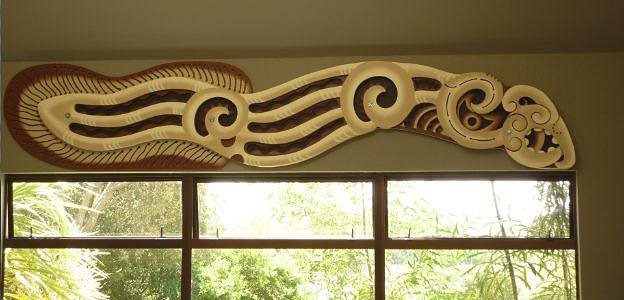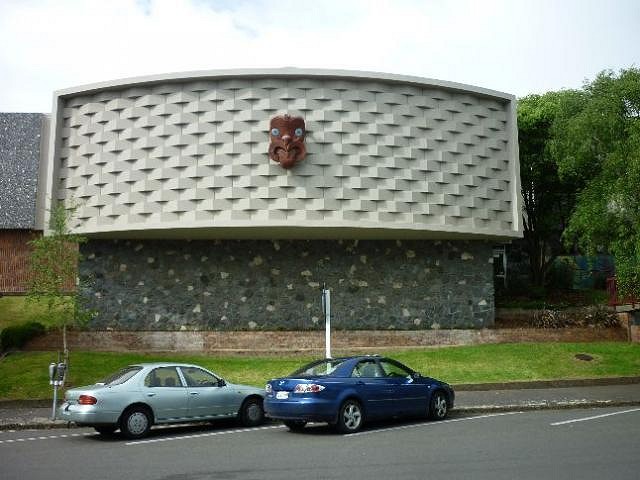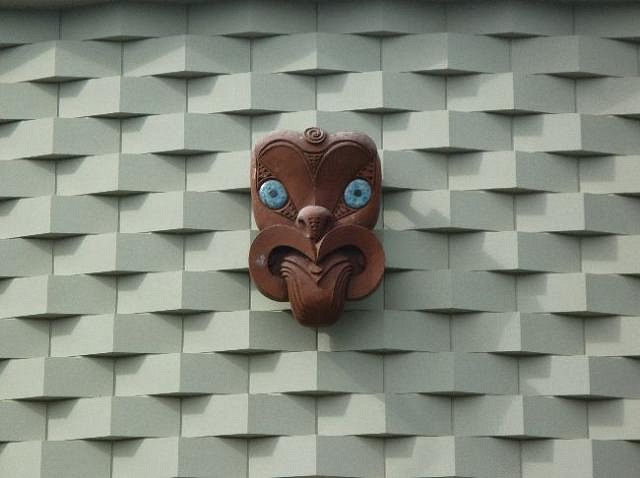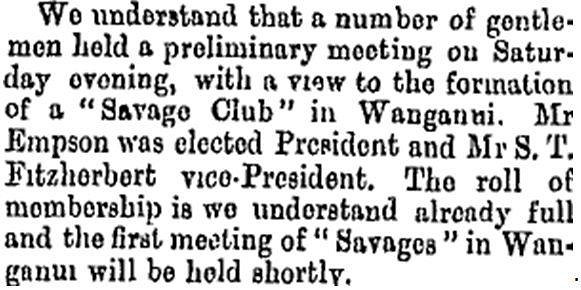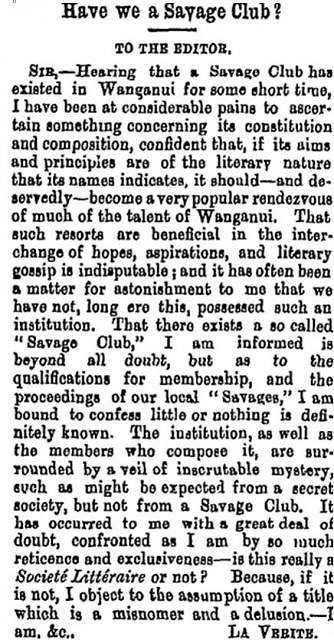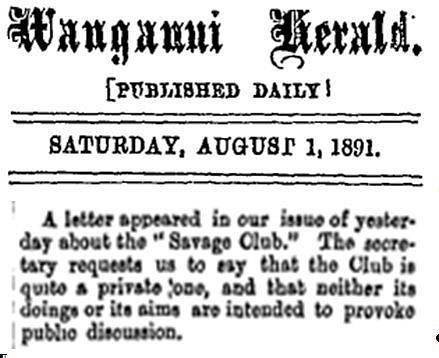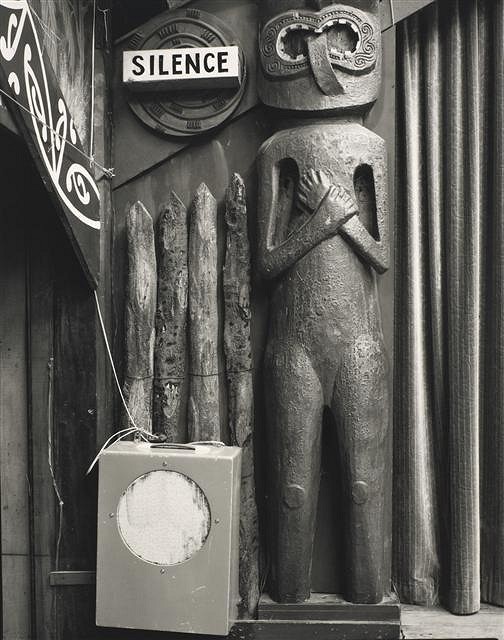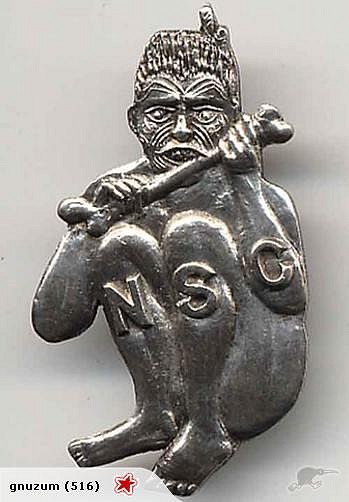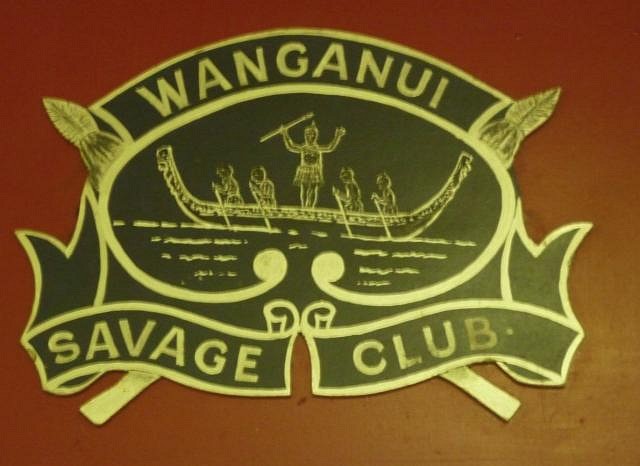Tiki Central / Tiki Travel
Wanganui: The Tiki Tour
|
CN
Club Nouméa
Posted
posted
on
Wed, Aug 11, 2010 7:32 AM
tiki tour Source: Urban Dictionary Consider yourself all my virtual rellies (relations), as I take you on a tiki tour of Wanganui... Part 1: South of the Whanganui River The first stop is the Durie Hill land elevator, one of only two in the world (the other one is in Portugal). Basically, it's a lift in a shaft inside a hill, which is accessed via a long tunnel that is reminiscent of entering a subway. Locals use the elevator to commute to and from the top of Durie Hill. The gate at the bottom of the hill is just opposite the city bridge that leads onto Wanganui's main street. The entrance gate to the elevator:
Along the path leading into the tunnel, there is an assortment of cheeky tiki carvings:
As the sign above the entrance indicates, the tunnel was opened in 1916. The next stop on our tour is Putiki which, prior to Wanganui being founded in the 1840s by European settlers on the northern bank of the Whanganui River, was the major settlement in this area. It is still a focal point for local Maori, and there is a marae there:
(pardon the join - I had to stick two photos together to get the full panoramic effect...) Warning: those Tiki Centralites offended by carved phalluses may prefer to avert their gaze from the following few photos... The main meeting house:
A covered stand where speakers and local leaders sit:
And a covered stand where visitors to the marae sit during ceremonies and speeches:
And this guy, atop what appears to be the food storehouse, looks suspiciously like he is eating an ice cream cone!
Just down the road from the marae, I came across this intricate letterbox:
Putiki was the site of a major battle in 1829, when the Maori warlord Te Rauparaha moved north from his stronghold on Kapiti Island and invaded the Whanganui region:
"Korokota" is the local Maoris' pronunciation of "Golgotha", which was the word Rev. Taylor used to describe the site when he first saw all the human remains that were still lying there 14 years after the battle. This photo shows the plinth mentioned in the sign:
The following link provides further information about Hoani Wiremu Hipango, who fought alongside British troops against the Maori living up the Whanganui River who opposed European settlement: http://www.teara.govt.nz/en/1966/hipango-hoani-wiremu/1 That brings Part 1 of the tour to an end. The next stop will be downtown Wanganui. CN Toto, j'ai l'impression que nous ne sommes plus au Kansas ! [ Edited by: Club Nouméa 2010-08-29 01:10 ] |
|
IK
Iokona Ki'i
Posted
posted
on
Wed, Aug 11, 2010 8:30 AM
Very cool! Thanks for the virtual tiki tour mate! |
|
T
TikiG
Posted
posted
on
Wed, Aug 11, 2010 8:36 AM
Club Noumea - Like Jason has expressed above, I must give a hearty Thank You to you for posting Part 1 of this New Zealand tiki tour... I hope to visit NZ soon and any information regarding a "Tiki Tour" is greatly appreciated. I'm also looking forward to Part 2. Trust that I'm keeping notes :) Aloha! G |
|
CN
Club Nouméa
Posted
posted
on
Fri, Aug 13, 2010 8:51 PM
Thanks for the positive feedback Iokona Ki'i and TikiG. Just to round off the first part, here is a map showing the locations mentioned in Part 1:
I'll include maps in the following instalments too, as some of these places are not mentioned in the tourist guides. CN |
|
CN
Club Nouméa
Posted
posted
on
Fri, Aug 13, 2010 10:44 PM
Part 2: From the Information Centre to Taupo Quay The second section of our Wanganui Tiki Tour starts downtown at the Wanganui tourist information centre, on Guyton Street:
This is where you can pick up tourist maps, guides and brochures, and visiting the centre provides the opportunity to admire this slightly mossy fellow:
The next two stops are definitely not marked on any tourist guides, but are worth a quick look, and are on Ingestre Street, just one block north-west of the information centre. Soak in the rusty corrugated iron feel and admire the seedy run-down environment as you walk up Hardy Street to get there. Wanganui City College (one of the local high schools) has a strong syllabus in terms of Maoritanga, and features a Maori cultural centre which is also used as a marae and a soundshell for cultural performances (kapa haka). The entrance gate:
And the building itself:
Detailed view of one of the carvings on the stage:
This is a very fine piece of contemporary Maori carving, although it is nonetheless inspired by the style of the early 20th century Rotorua school. Walking further along Ingestre Street towards Victoria Avenue, just across St Hill Street is our next stop; the Maori Land Court:
Admittedly, it is not a very attractive building, which is probably why they tried to hide it behind that hedge, but if you walk into the reception area, you will find six finely-executed carvings of various Maori ancestor figures. Te Aokehu, a local chief who slayed the taniwha Ekaroa:
So what's a taniwha? Link: http://www.teara.govt.nz/en/taniwha/1 Hau Pipi, one of the crew of of the canoe Aotea:
More information on the waka Aotea: http://en.wikipedia.org/wiki/Aotea_(canoe) Usually there are four other carvings in this reception area, including one of Kupe, but they were away for cleaning when I paid a visit. And if you're feeling lucky, you could also ask the receptionist if they have any spare copies of the various posters they have up on the walls... Walking back towards the Whanganui River, along Victoria Avenue, Wanganui's main street, you will see various tourist gift shops which sell things like greenstone (jade) carvings, but we are going to ignore them and pop into the Westpac Bank instead. Behind the counter are three Maori carvings well worth a look:
Detailed view of one of the carvings:
I would love to tell you who or what these carvings depict, but they are in an area off-limits to customers and the descriptive details alongside them are not at all legible. There was some fuss and bother from the counter staff when I asked to photograph them, and I had to get the manager's permission to do so, although I did manage to plant the germ of the idea in his head that maybe they would be better displayed if they were placed where the public could see them properly. Still ignoring the tourist gift shops, we are now going to head across the road to the local branch of the ANZ Bank. In the foyer is this imposing carved stone:
I happened to be passing when they installed this stone earlier this year and it must weigh a ton as it took several men to carry it into the foyer and lift it onto its pedestal. Walking further down Victoria Avenue, you may come across some local buskers:
These guys were singing reggae songs. Further along Victoria Avenue, when you reach the city bridge, turn left into Taupo Quay. Fifty yards or so up the street, at No. 17 Taupo Quay, you will spot this building:
This is the WH Milbank Gallery, and features NZ Polynesian pop art:
At the back of the gallery was an assortment of images from an exhibition devoted to a Ratana church at Raetihi:
Background on the Ratana Church, founded south of Wanganui in the 1920s: http://en.wikipedia.org/wiki/R%C4%81tana A few doors along from the Milbank Gallery is an old building that was once the clubhouse of the Wanganui Rowing Club:
It now houses the local riverboat museum. Visitors are greeted by this figurehead clutching a paddle:
The Whanganui River was one of New Zealand's earliest tourist attractions, and the displays include an interesting collection of 19th-century tourist brochures, maps and other paraphernalia:
My favourite is the one that refers to the Whanganui River as "the Rhine of Maoriland". The museum has exhibits on the riverboats that ran up and down the river in the late 19th and early 20th centuries, including a riverboat that is currently being restored:
You can also buy tickets here for the Waimarie, a restored paddle steamer. Check the following site for details: http://www.riverboat.co.nz/ That concludes the second stage of the Wanganui Tiki Tour. In Part 3, we follow in the footsteps of Mark Twain as we visit Moutoa Gardens. CN Toto, j'ai l'impression que nous ne sommes plus au Kansas ! [ Edited by: Club Nouméa 2010-08-13 23:32 ] [ Edited by: Club Nouméa 2010-08-13 23:55 ] [ Edited by: Club Nouméa 2010-08-14 00:40 ] [ Edited by: Club Nouméa 2010-08-14 00:47 ] [ Edited by: Club Nouméa 2010-08-14 00:51 ] [ Edited by: Club Nouméa 2010-11-22 14:33 ] |
|
CN
Club Nouméa
Posted
posted
on
Sat, Aug 14, 2010 12:31 AM
Here is the map for Part 2 of the tour:
CN |
|
CN
Club Nouméa
Posted
posted
on
Sun, Aug 29, 2010 12:36 AM
Part 3: From Moutoa Gardens to the Museum Moutoa Gardens is an area right beside the Whanganui River. For hundreds of years, prior to the European town being established in the 1840s, there was a fishing settlement here, called Paikatore. Even after the town centre grew to encompass this area, in the mid to late 19th century, local Maori who lived along the river continued to land their canoes here when visiting Wanganui.
The photo above shows the site in the 1860s. In the foreground is a newly-built statue commemorating the victory in 1864 of lower river Maori over upper river Maori at the battle of Moutoa Island (80km up the Whanganui River). Behind the statue, to the right, is the town courthouse and jail. To the left is Reid's Albion Hotel. Towering over the scene is the Rutland Stockade, a fortification built on Pukenamu Hill (now Queen's Park). The Rutland Stockade was part of fortification works in Wanganui initiated in 1847 in response to upper river Maori, who were becoming hostile to the influx of European settlers that the founding of the town had prompted. By the 1860s, the town's defences had been extended to encompass redoubts upriver in order to forestall any attacks by war parties coming down the Whanganui River, and were put to the test when discontent developed into general conflict in the mid to late 1860s. The River Queen (2005), a film starring Keifer Sutherland, depicts this period of conflict. Although somewhat fictionalised (it refers to an 1860s military campaign on a river named "Te Awa Nui" - The Great River - rather than "Whanganui"), it was filmed in the Whanganui region and is loosely based on actual events that happened there. Further details: http://en.wikipedia.org/wiki/River_Queen Here is what the Moutoa Gardens site looks like today:
The aforementioned statue is just visible on the far right in the photo. Here is a closer shot:
There is little ambiguity about whose side the townfolk were on. Mark Twain, who visited Wanganui in December 1895, was prompted to write the following remarks in his diary after having seen this statue: “Patriotism is patriotism. Calling it fanaticism cannot degrade it… the men were worthy. It was no shame to fight them. They fought for their homes, they fought for their country, they bravely fought and bravely fell; and it would take nothing from the honor of the brave Englishmen who lie under the monument, but add to it, to say that they died in defense of English law and English homes against men worthy of the sacrifice – the Maori patriots”. Moutoa Gardens made the headlines in New Zealand in 1995, when it was occupied by local Maori protesters for 79 days. They declared that the land at Paikatore was Maori land that was not part of the land sale that had resulted in the establishment of Wanganui, and the whole nation watched as the issue was aired in the media spotlight, with the town council on one side and the protesters on the other. After 5 years of discussions, both parties agreed to jointly manage the site in 2000. A prominent victim of the protest action was a statue of John Ballance, which was toppled:
John Ballance was a local newspaper editor in the 1860s, who rose to prominence as a politician, eventually becoming the Premier of New Zealand, leading a Liberal Government from 1891 to 1893. The protesters were possibly unaware of his vocal criticisms of government policy in the land wars of the 1860s, which resulted in him being threatened with a court martial and losing his commission in the Wanganui Yeoman Cavalry, a local militia unit. They were perhaps also unaware of the fact that in 1879 Ballance lost his parliamentary seat as Member for Wanganui due to local Europeans' hostility to his support for the Maori pacifist Te Whiti (more about Te Whiti: http://www.teara.govt.nz/en/1966/te-whiti-o-rongomai-or-erueti-te-whiti/1 ). Such are the ironies of history. The fate of Ballance's statue lay undecided for many years. Marton, a town not far from Wanganui, even offered to take it off the town council's hands. Eventually, earlier this year, a new statue was erected outside the council offices (next door to the tourist information centre):
On the other side of the Moutoa Gardens site is a monument to Te Keepa Te Rangihiwinui, also known as Major Kemp:
His biography: http://www.nzhistory.net.nz/people/te-keepa-te-rangihiwinui The monument commemorates various battles he fought against upper river Maori from 1866 to 1870. On each of the monument's four sides is a bas-relief showing a battle scene, and an account of what happened there:
A stone's throw from the Major Kemp monument is a war memorial to local Maori who died in World War I:
From 1914 to 1918, New Zealand paid a high price in that conflict, and such memorials are to be seen in the smallest of small towns all over the country, but this particular one stands out for two reasons. The first reason is that it is dedicated solely to Maori soldiers, and the second is that it features text in Maori, which was a rarity on public monuments in those days:
Across the road from this monument, where the Albion Hotel used to stand in the 1860s, is this entrance to the local polytech:
This campus only opened a couple of years ago, so these are new carvings:
Moving over to the other side of the hill that the Rutland Stockade once stood on, we come to memorials to British soldiers who fought and died in the 1860s land wars:
And a little further on is Wanganui's largest depository of Maori artifacts, the Whanganui Regional Museum:
In the foyer is a shop that has a good range of books on Maori artifacts and carving, Maori language and culture, and local history. They also sell souvenirs like bone carvings. Across from the shop is this carving, symbolising the Whanganui region and the people who live there:
The museum's main hall is where most of the Maori treasures are to be found, along with a famous collection of 19th-century paintings of local Maori by Gottfried Lindauer (biography: http://www.teara.govt.nz/en/1966/lindauer-gottfried-or-bohumir/1 ):
I would like to show you more, but at this point the camera police descended upon me. Suffice to say, if you want pictures of their extensive collection, you will have to buy the museum catalogue... Which I eventually did:
And well worth the money it is too. It provides details on the history of the museum's Taonga Maori collection, including good coverage of the Gottfried Lindauer paintings, photos of items I have never seen on display, and there is also a CD-ROM with a record of all 4,500 of the taonga (treasures) held by the museum. Also, when you are at the museum, do not miss the exhibits upstairs, which include a new section on the land wars of the 1860s. In the next instalment, we see the inside of an inner-city marae. CN Toto, j'ai l'impression que nous ne sommes plus au Kansas ! [ Edited by: Club Nouméa 2010-08-29 02:00 ] [ Edited by: Club Nouméa 2010-08-29 02:25 ] [ Edited by: Club Nouméa 2011-02-25 21:11 ] |
|
CN
Club Nouméa
Posted
posted
on
Sun, Aug 29, 2010 1:49 AM
Here is the map showing the locations in Part 3 of the Wanganui Tiki Tour:
CN Toto, j'ai l'impression que nous ne sommes plus au Kansas ! [ Edited by: Club Nouméa 2010-08-29 02:31 ] |
|
4
4WDtiki
Posted
posted
on
Sun, Aug 29, 2010 7:37 AM
Great tour of a place most of us will never get to visit, thanks! |
|
CN
Club Nouméa
Posted
posted
on
Sun, Sep 5, 2010 11:42 PM
Part 4: St Mary's Church & Te Rau Oriwa Marae Behind the Whanganui Regional Museum is St Mary's Church:
The church itself features a traditional Maori gate:
Attached to the church is the Te Rau Oriwa Marae:
Here are some shots of the gate leading into the marae's grounds:
And there is another gate leading into the building once you get inside the grounds:
Some detailed views:
A kaumatua (elder) was kind enough to allow me inside to take photos of the interior:
The interior carvings all date from 1991. I would have liked to get explanations of who the various figures represented, but the kaumatua was busy organising a social event, so I didn't bother him and just quietly snapped a pile of photos. Here is a general view of the interior:
Various shots of the central pillar:
And some shots of the interior walls, working from right to left if you refer back to the photo of the general view of the interior:
The woven panels were interesting. They were actually made using hardboard pegboard (available from a hardware store near you...), with the fabric woven in and out of the holes. That concludes Part 4 of the Wanganui Tiki Tour. In Part 5, we go moa hunting... CN |
|
CN
Club Nouméa
Posted
posted
on
Sun, Sep 5, 2010 11:57 PM
And here is a map showing where the church in Part 4 is located:
CN |
|
CN
Club Nouméa
Posted
posted
on
Sun, Sep 19, 2010 2:50 AM
Part 5: North of Central Wanganui The first stop on the final leg of the Wanganui Tiki Tour is Kowhai Park, where visitors can get to see some real moas:
Well, real concrete ones anyway:
Moas were on the verge of extinction around the time of Captain Cook's first voyage to New Zealand in 1769. It is thought there were still a few of these large flightless birds to be found inland, but there is no record of Europeans ever having seen a live specimen. There are plenty of reconstructions of them to be seen in New Zealand museums though. Here is a skeleton from the New Plymouth museum:
From Kowhai Park, we head upriver to Aramoho marae. Here is the entrance gate:
A detailed shot:
The marae's flagpole:
And a detailed view of the carving at its base:
Our next stop is Cullinane College, to have a look at the gateway to the Hohepa Block:
Hohepa Block is where the college's Maori language and culture courses are taught. A detailed shot of the carvings:
Virginia Lake is part of a reserve beside the road leading out of Wanganui, north-west to the province of Taranaki:
In pre-European times, there was a small settlement called Toronui at the end of the freshwater lake shown here, where local Maori used to come to catch eels when they were in season. Virginia Lake Reserve also features a statue of Tainui, a chief's daughter who features in a local legend that is a Romeo and Juliet-style tale. It is said that Tainui shed tears here when the forest birds told her of the death of Turere, the warrior she was in love with.
CN |
|
CN
Club Nouméa
Posted
posted
on
Sun, Sep 19, 2010 3:16 AM
And here is the map for the final part of the Wanganui Tiki Tour:
CN |
|
CN
Club Nouméa
Posted
posted
on
Fri, Nov 19, 2010 9:51 PM
Breaking news is that the Wanganui Tourist Information Centre has now relocated to a new site on Taupo Quay, just across the road from the polytech. Consequently the old Tourist Information Centre building has closed. I do not know what is going to happen to the big mossy tiki carving outside the old centre. Maybe I should ask if they want to donate him to a good home? Here is an addition to the Tiki Tour, to be found at the Te Taurawhiri Building, 357 Victoria Avenue, which is the regional office of Te Puni Kokiri (the Ministry of Maori Development):
This fellow is over 6 feet tall and stands in the foyer, with a couple of kete (flax bags) hanging on the wall beside him. You can all disregard comments in previous posts about the Tiki Tour being over. I have belatedly realised that there was a major omission in my tour: The Wanganui Savage Club Hall! This is the original Wanganui museum building, and it is fitted out tiki-style, although we are talking old-style tiki here; possibly Tiki Victoriana rather than Tiki Modern. Click on this link for a foretaste: http://collections.tepapa.govt.nz/ObjectDetails.aspx?oid=637564 The Wanganui Savage Club Hall is still used as a concert venue, so next time a show is on there, I am going to roll around early and start snapping photos. The stage is very impressive. CN
[ Edited by: Club Nouméa 2011-03-24 03:28 ] |
|
B
bigbrotiki
Posted
posted
on
Mon, Nov 22, 2010 12:40 PM
Wow, thank you for all your work in scanning, uploading, organizing, and posting all these images and information! I feel like I have been there ...almost. Actually, I feel like I definitely gotta go some day! |
|
CN
Club Nouméa
Posted
posted
on
Mon, Nov 22, 2010 2:44 PM
Thanks Sven! Wanganui is an interesting place in terms of Maori culture, but unlike Rotorua, it does not wear its tikis on its sleeve - you have to go looking for them. I have the impression that many of the locals would not have seen or even know about various of the carvings featured here. Doubtless there are still a few more around town that I have missed, and there are various interesting sites up the Whanganui River too, so I may be busy longer than I first imagined when I started this thread. CN |
|
CN
Club Nouméa
Posted
posted
on
Sun, Dec 5, 2010 4:50 AM
Part 6: Tiki Culture's Missing Link: The Wanganui Savage Club In Part 6 of the Wanganui Tiki Tour, we investigate a missing link in tiki culture... Our story begins in London in the 1850s with George Augustus Sala, a journalist and author whose works were published in reviews by Charles Dickens and William Makepeace Thackeray, among others:
On 8 October 1857, Mr Sala called a meeting of gentlemen at the Crown Tavern in Drury Lane, London, to "confer upon the expediency of forming a social society or club, hereafter to receive a suitable designation":
The outcome of this meeting was the creation of the Savage Club, originally intended to be a somewhat irreverent literary club, which was named after one Richard Savage, a minor 18th-century satirical poet with a dubious background. Savage was a friend of Dr Johnson's, and had a reputation as being a violent man who had a lifetime of quarrels and brawls, one of which he killed a man in. He was also successfully prosecuted for libel, and was imprisoned for being a delinquent debtor. This London club met fortnightly for dinners, followed by entertainment, and such was its success that counterparts began popping up all over the British Empire. Out in the colonies and dominions, the name "Savage Club" was given a further twist through cultural associations that were not originally intended by the London club, but were just as irreverent. In Canada for example, local chapters adopted Pacific Northwest Indian icons and customs. So it was only natural that when, in 1891, the first Savage Club in New Zealand was founded, it should adopt the iconography and customs of the local Maori:
The Wanganui chapter was the first of a series of Savage Clubs across New Zealand, some of which were established as far away as Christchurch and Oamaru, in the South Island. Like the Paramount Savage Club in Wanganui, other branches also adopted Polynesian imagery. Here is a badge from the New Plymouth Savage Club:
Like the original London Savage Club, the New Zealand Savage Clubs would meet every few weeks for food, drink, and entertainment, but unlike the English originators, the New Zealand clubs adopted the ceremonial titles, clothing, and symbols of indigenous Maori: The Club President was called the "Rangatira" (Chief), and wore a Maori korowai (cloak) and a hei-tiki around his neck:
Tikis are clearly visible on 6 of these paintings of Wanganui Savage Club Rangatiras from the mid-20th century. In the late-20th century, ordinary members wore green blazers with the emblem of the Wanganui Savage Club stitched onto their breast pocket:
A major part of the Savage Clubs was the evening entertainment which, in addition to local members, was provided periodically by visiting performers from other chapters, all of whom would be greeted by singing of the Savage Club song:
It is interesting to speculate on what the covered-up and amended words in this song originally were. Judging from the rhyme on line 3, it is safe to assume that the original word covered over by "members" was "hori". For North American readers unfamiliar with this term, although in the 19th century this was originally just an informal name for Maori, over the years it has come to assume racist overtones, and nowadays it is just as taboo in New Zealand as the "N-word" is in the US. While I do not have statistics at hand, judging from the photos and paintings hanging on the walls of the Wanganui Savage Club Hall, the majority of members were white, which makes the cultural significance of such customs open to various interpretations. Defenders of the Savage Club ethos point to the adoption of Maori emblems, clothing and culture as being indicative of a group of Pakeha (European) non-conformists who adopted indigenous Polynesian culture to show what free-thinkers they were. A less charitable PC approach would point out that a high level of European cultural paternalism is evident in the following imagery from the club's walls, along with a whiff of racism:
Note the image in the lower left-hand corner of the 3 gentlemen clad as Maoris standing around a cooking pot. And then there is the title of the following revue organised by the Wanganui Savage Club in the 1950s:
There is some cultural sidestepping here, as the "native" depicted alongside the "Kannibal Kapers" heading is clearly an African, but for those unfamiliar with New Zealand history, ritual cannibalism was performed by the Maori in these islands into the 19th century, and mentioning these practices remains one of the great cultural taboos here. To put it mildly, these reminders of that past hanging on the Savage Club's walls are not shining examples of cultural sensitivity. Still, setting aside these unpleasant echoes from the past, let's have a look at the architectural heritage provided by the Wanganui Savage Club Hall, located in the old museum building on Drews Ave (Queens Park Hill). It calls for some substantial revisionism of tiki culture history. Readers of books such as "Tiki Modern" will be forgiven for thinking that Polynesian style was first appropriated by Europeans for dining, drinking and social venues by Trader Vic and Don the Beachcomber in California in the 1930s. Actually, the idea seems to have originated four decades earlier, in the 1890s, in Wanganui:
119 years after it was founded, the tiki-themed Savage Club survives through this venue, which is still being used for social events. The following are photos I took on Friday 3 December 2010: General view from the foyer:
The back wall:
Close-up view of the back wall:
The stage:
Close-ups of the stage:
The side walls feature more Maori-style pieces and landscape scenes, along with the emblems of affiliated clubs:
The identical tikis along the side walls look late-20th century, and various other carvings look early to mid-20th century, but the two tiki carvings flanking the stage appear quite venerable, and I would not be surprised if they were older. I can hear gasps of shocked disbelief from defenders of Californian tiki culture all the way across the Pacific. But can any of them point to a similar Polynesian-themed social club in California that dates back to the 1890s? CN Toto, j'ai l'impression que nous ne sommes plus au Kansas ! [ Edited by: Club Nouméa 2010-12-05 04:56 ] [ Edited by: Club Nouméa 2010-12-05 05:06 ] [ Edited by: Club Nouméa 2010-12-05 14:55 ] [ Edited by: Club Nouméa 2010-12-05 22:02 ] [ Edited by: Club Nouméa 2011-03-24 03:36 ] |
|
BPB
Bay Park Buzzy
Posted
posted
on
Wed, Dec 15, 2010 10:01 AM
Thanks for taking the the time to do all this. It's a vey enjoyable thread for me. Well done! Buzzy Out! |
|
H
hiltiki
Posted
posted
on
Wed, Dec 15, 2010 5:06 PM
I agree with Buzzy, this is an interesting thread for me also, I look forward to your updates. |
|
T
TikiG
Posted
posted
on
Wed, Dec 15, 2010 5:11 PM
Bravo!! |
|
B
bigbrotiki
Posted
posted
on
Thu, Dec 16, 2010 1:26 PM
Absolutely FAN-TASTIC! That clubhouse stage, the whole place, amazing! Reminds me a little bit of early Shriners and Masons lodges, except they were decorated with oriental imagery. How wonderful that this place has remained intact and un-renovated. Thank you for those pictures. Great research! I appreciate your sensitive comments about some of the material's un-p.c.-ness too. To me, questions of racism cannot be judged from today's standpoint only, but have to be regarded from the perspective of what the reality was in their own time: Even though some Westerners had a fascination and love for the native arts and cultures, most of them could not divest themselves from the sense of superiority over indigenous people that they had been brought up with for centuries. It took the better part of the 20th century for the realization to sink in that that kind of thinking was not necessarily based on facts. Luckily, we know better now (well most of us do), but to censor and hide proof of earlier, un-educated attitudes is a mistake in my view (obviously :) ). Examples of such should be seen as what they were in their own time. (..and I am not saying this suggesting YOU are not doing that, C.N.!) And here's my take on this part of your post:
|
|
B
bigbrotiki
Posted
posted
on
Thu, Dec 16, 2010 3:02 PM
C.N., please do not take this as a "rebuttal" or attempt of diminishing your discovery, which has high merit on its own. I simply try to continuously differentiate and clarify when it comes to the definition of Tiki style, because there is so much confusion out there. Next thing you know, someone would post on a blog somewhere "Well I heard that BEFORE Don The Beachcomber there was a New Zealand social club house where..." and then that would perpetuate and spread and... Well, I don't REALLY believe that that would happen, since realistically nobody else but me gives a rat's ass about these technicalities. But you successfully elicited my response by anticipating "...gasps of shocked disbelief from defenders of Californian tiki culture..." :) |
|
CN
Club Nouméa
Posted
posted
on
Thu, Dec 16, 2010 9:09 PM
Thanks for the thought-provoking comments, Sven. I partly wrote those provocative (but not THAT serious) comments to see if anyone would "bite", and to get people thinking. I am greatly interested by your definition of what constitutes "Polynesian pop" and "Tiki style" as (along with Chile) New Zealand is one of the few countries other than the United States with a dominant European population and culture where Polynesians constitute an ethnic and cultural minority, and I have been wondering why we don't have tiki bars and restaurants here (and never have had, as far as I can tell). Part of it is to do with geographical proximity: Polynesia is not an "exotic" place when you live in a country that forms part of it. Another related aspect is cultural sensitivity, while yet another part of it is to do with the fact that at the time Polynesian pop culture flourished in the United States, most New Zealanders still saw themselves as being the Englishmen of the South Seas. The Savage Club was a complete eye-opener for me, and I am still trying to size up its cultural implications, both in relation to New Zealand, and Polynesian pop culture generally. It runs counter to my previous preconceptions of how these generations of white New Zealanders tended to publicly interact with Polynesian culture. My initial impression is that when it was formed, the Savage Club actually had little to do directly with the local Maori community here, which very much makes its existence just as paradoxical and out of place as the existence of a "Polynesian-style" dining establishment like Trader Vic's in Oakland. And the idea of local Europeans dressing up in Maori ceremonial costume etc. and getting together in this hall still seems extremely bizarre. This is a whole chapter in New Zealand's cultural history that most New Zealanders know nothing about, in addition to which the club's existence does seem to have wider implications when viewed alongside the cultural developments outlined in your books, even if it occurred in isolation from what happened in mid-century North America. I would contend that there is a distinct tiki culture in New Zealand that is not necessarily authentic, and may even be despised by Maori for its lack of authenticity. The Savage Club offers a prime example. So if anyone else has any thoughts, please feel free to contribute. CN Toto, j'ai l'impression que nous ne sommes plus au Kansas ! [ Edited by: Club Nouméa 2010-12-17 00:13 ] [ Edited by: Club Nouméa 2010-12-17 00:15 ] |
|
B
bigbrotiki
Posted
posted
on
Fri, Dec 17, 2010 8:49 AM
Proximity and cultural sensitivity are exactly two of the reasons that I always mention why Tiki style did not take off in the Hawaiian islands on the same level than in the States. When far away, it's a case of "the grass is always greener on the other side": But when you are AT the exotic place, what is there left to desire? And there is much less room for your imaginations to run wild...(and doing that without stepping on anyone's toes). The New Zealand situation is very specific, but also has general parallels to Caucasian attitudes towards indigenous people. Ever since Bougainville and Melville's Queequeg there was a fascination and admiration for the "noble savage" in the Western mind. This however was an idealization not touched by racial reality. If your daughter would have wanted to wed such a noble native, things would have looked decidedly different. It was cool as long as it was viewed with a distance. The social and economic gap between European New Zealanders and Maori was (and to some degree still is?)too large. I am very fascinated by another country that for all intent and purposes SHOULD have had a thriving Polynesian pop culture: France. Just like America "owned" Hawaii, they always had THE idealized South Seas paradise, TAHITI! They have the distance, and they have an established pre-poly pop history of idealization with Gauguin and Pierre Loti. So WHY do they have no Polynesian pop worth mentioning in France? Clearly a case of the above mentioned "cultural sensitivity", the bane of the century-old keepers of high culture in Europe, the disdain for plebeian popular, i.e. "bad", taste. Americans in turn had a carefree, boyish sense of wonderment for Polynesia and freely lived it. [ Edited by: bigbrotiki 2010-12-17 14:54 ] |
|
CN
Club Nouméa
Posted
posted
on
Fri, Dec 17, 2010 6:33 PM
I forgot to thank Bay Park Buzzy, hiltiki and TikiG for their positive comments - thanks folks! CN |
|
CN
Club Nouméa
Posted
posted
on
Fri, Dec 17, 2010 7:13 PM
France is an interesting case, because its Polynesian territories (French Polynesia, Wallis & Futuna) were minor parts of a global empire. From the late 18th century onwards, French philosophes and intellectuals appropriated Tahiti as an idealised concept synonymous with utopia, but this doesn't seem to have had much resonance in the French popular imagination in the 19th and 20th centuries. If you look at French pulp fiction, comic books, advertising, films and stage and even radio plays, you will find that darkest Africa, the burning sands of North Africa, and even Indochina had far more resonance than Polynesia, and they still do. There was no level of direct contact between the mainland French population and the French Pacific that is comparable to the huge numbers of US servicemen who visited the South Pacific in WWII and returned home full of nostalgia for the South Seas. Yes, French civil servants, soldiers, sailors etc. served there, but they were (and are still) far fewer in number than those who served in Africa, for example. Even in the age of jet travel, comparatively few French people travel to that part of the world. French Polynesia is an expensive destination for French tourists when compared with "Club Med" style destinations in North Africa, the Caribbean, or even the Indian Ocean. Due to its remoteness and high cost of living, French Polynesia has had trouble fulfilling its ambitious projections regarding tourist arrivals for decades and its tourist trade would have collapsed long ago were it not for US and Asian tourists. To this day, next to nothing is taught about the South Pacific in French schools, even though New Caledonia, Wallis & Futuna, and French Polynesia now constitute substantial parts of the much-reduced French global empire, or DOM-TOM ("Overseas Departments and Territories") as they prefer to call them in these "post-colonial" days. French Polynesia alone has a maritime zone larger than Continental Europe... So these are all factors that contribute to explaining why the mainland French do not have tiki bars and restaurants as a substantial part of their popular culture. CN Toto, j'ai l'impression que nous ne sommes plus au Kansas ! [ Edited by: Club Nouméa 2010-12-17 19:25 ] [ Edited by: Club Nouméa 2010-12-17 19:29 ] |
|
CN
Club Nouméa
Posted
posted
on
Tue, Jan 11, 2011 3:44 AM
Getting back to the Savage Club Hall, according to the following link, the future of this venerable Victorian building is not certain: http://www.wanganui.govt.nz/News/showNews.asp?id=1344 The Wanganui District Council sold the building to the Savage Club in 2008 for a token amount of $1, whilst retaining ownership of the land it stands on. According to this agreement, in 2015 (with the possibility of a one-year extension), the Savage Club is to give the building back to the Council, which then has the option of either demolishing or resiting the building. It should be noted that the land the Savage Club Hall stands on is prime downtown real estate, with a hilltop view, so there is a very real chance that the Council may decide to take the money and dump the building... I do wonder if any of the functionaries in the Wanganui District Council fully understand the historical significance of the Savage Club Hall. CN Toto, j'ai l'impression que nous ne sommes plus au Kansas ! [ Edited by: Club Nouméa 2011-01-11 03:52 ] |
|
P
Paipo
Posted
posted
on
Tue, Feb 8, 2011 9:28 PM
Keep meaning to reply, keep forgetting...until now. Incredible thread CN and exactly the type of content that makes TC the great resource it is. It also makes me want to visit W(h)anganui, especially to see the Savage Club Hall. I have been fascinated by Savage Club ephemera for some time now (though yet to really add any to the collection) , especially the famous pic by Laurence Aberhart, and this thread has enriched the knowledge bank greatly. Thanks for all the effort - good posts are hard work! |
|
CN
Club Nouméa
Posted
posted
on
Sat, Feb 12, 2011 4:41 AM
Hello Paipo, Thanks for the positive input. If you do intend to visit Wanganui/Whanganui/Petre some time, let me know in advance and I will see if we can plan your trip to coincide with an event at the Savage Club Hall. I am also looking for a driver to take me up the Whanganui River Road for the next stage of the Tiki Tour too... CN |
|
CN
Club Nouméa
Posted
posted
on
Sun, Mar 20, 2011 5:37 AM
Part 7: Whanganui River Postcards As a prelude to my as yet unscheduled trip up the Whanganui River Road, here are a few postcards showing what the river looked like in the late 19th century. A supposedly happy chief standing outside a whare:
How the upper crust lived: Victorian tropical décor at Pipiriki House, described as being on "New Zealand's Rhine":
And just to add a bit of colour:
The caption reads "River below Pipiriki". CN
[ Edited by: Club Nouméa 2011-03-20 05:46 ] [ Edited by: Club Nouméa 2011-03-20 05:54 ] [ Edited by: Club Nouméa 2011-03-24 03:43 ] |
|
CN
Club Nouméa
Posted
posted
on
Thu, Mar 24, 2011 3:19 AM
Part 8: The Wanganui Savage Club – the plot thickens...
Whilst doing further research on the Wanganui Savage Club Hall, I discovered this wonderful photo, with its combination of Maori relics and stuffed marine life, showing what the Savage Club Hall looked like back when it was still the Wanganui Museum. (I particularly like the small pot-bellied tiki carving sitting on the top shelf to the right, just in front of what looks like a stuffed albatross.) It turns out that this photo was taken in 1899... 1899! Hang on, wasn’t the Wanganui Savage Club founded in 1891? Yes indeed, and upon further research, I discovered that the Wanganui Museum was actually founded in 1892, one year after the Wanganui Savage Club was created, and it appears that the club moved into this building only once the museum had relocated to its current premises in 1928. So where does that leave us? With a 37-year period of the club’s existence which is currently unaccounted for. This raises various questions: Where was the club originally located? Were the club’s original premises decked out with tiki carvings too? Are there any surviving photos of the original premises? So it appears that my initial impression (see Part 6), that most of the décor dates from the early 20th century or later was correct – the building was refitted from around 1928 onwards by the Wanganui Savage Club. But what of those two suspiciously old-looking tiki carvings flanking the stage? Were they transferred from the original premises? It looks like more research will be involved to get to the bottom of the Wanganui Savage Club than I originally thought. Californian tiki aficionados should note that in spite of these revelations, the Wanganui Savage Club’s present location is still about 6 years older than Don the Beachcomber’s original Hollywood location... I have also checked out the Savage Club Hall’s preservation status. It is neither registered with the New Zealand Historic Places Trust, nor is it currently listed in the Wanganui District Council’s District Plan. The ramifications of this are that, as things stand, if the Council’s bureaucrats decide in 2015/2016 that they want to tear down the building and sell off the property, they can do so as it has no legal protection whatsoever. Something needs to be done about this. I will keep you posted but would like to send out some initial feelers – Sven, would you be prepared to write a paragraph or two about what makes the Savage Club Hall unique in the world in terms of Polynesian pop culture? And do we have any qualified architects and/or interior designers on Tiki Central who would be prepared to offer comments about the uniqueness of the building’s architecture and interior design? NZ bureaucrats love foreign experts with a list of qualifications and references, and are more likely to give them credence than some local like me telling them that it’s more than just an old tin shed with some slightly dubious memorabilia and Maori-style décor of doubtful authenticity (which is the line the Council’s functionaries may adopt if they decide to pull it down). Thanks in advance for any comments you may be able to offer. CN
[ Edited by: Club Nouméa 2011-03-24 04:17 ] [ Edited by: Club Nouméa 2011-03-24 04:21 ] |
|
CN
Club Nouméa
Posted
posted
on
Fri, Apr 1, 2011 6:37 AM
Part 9: The Wanganui Savage Club - More Photos
There was another musical event on at the Savage Club on Friday night (1st of April), so I took the opportunity to snap some more photos.
The high point of the evening's entertainment was Tama K, an outstanding guitarist with a rock solid rhythm section:
The first thing I noticed, going around the walls looking at the pictures, was that there was very little that predated 1928. This was the oldest photo I spotted, from 1926:
Unfortunately, it's of the Christchurch Savage Club Council - not a tiki or Maori cloak in sight! The walls with the paintings and photos of the Wanganui Savage Club presidents started only with the 1929 Rangatira (top left), who also happened to be a Man of the Cloth:
So where did the club's older memorabilia go? Another mystery that needs to be cleared up... Note too that all these Wanganui presidents (from 1929-1962) are wearing a hei-tiki, except for the second to last guy, who is wearing a war medal instead. Here are the club presidents through to the present day, the latest of whom is a woman:
On the back wall, to the left of the foyer, there are various of these framed medals, commemorating honoured Rangatiras:
A couple of the alcoves on the left-hand side of the hall (when facing towards the stage) are lined with photos of the Savage Club's High Councils:
Here is a close-up of one of the more interesting ones, showing what the stage of the Savage Club Hall looked like in 1953:
A Savage Club membership certificate:
The text reads: "To all Savages and Kindred Spirits: "Be it known by these Presents that David Strachan has been for 7 years a member of this the Hawera Savage Club. [note: Hawera is in South Taranaki, north of Wanganui] "Know that he has merited the name of a truly savage Savage, a warrior well blooded and qualified to hold his own in the social life of his Hapu [clan] as well as in warlike raids on other tribes. "We commend him to the good fellowship of whatever Hapu or Club may be within his reach, on behalf of the Hawera Hapu we wish him Kia Ora and good hunting in his new sphere." "Ake! Ake! Ake! Kia Kaha! [Forever and ever and ever be strong!]" Wanganui Savage Club Protocols, pinned to the back wall of the hall, near the foyer:
And a tantalising glimpse of the Savage Club farewell song board, hanging from ropes above the stage:
One of the various emblems of other Savage Clubs hanging along the side walls:
The following are photos of various "cultural" groups, in increasing order of un-PCness:
Note the use of advertising placards above as substitutes for sporrans - an offence to any Scotsman...
The above photo is interesting because it gives a glimpse of what the Savage Club Hall looked like in 1953.
Judging from appearances and the surname (Karaitiana), there were at least two Maoris in this 1936 haka group. The fact that the various Pakehas (Europeans) have full-face moko painted on is vaguely disturbing, but nowhere near as disturbing as the following photo... ... the faint-hearted may prefer to close their eyes and just scroll down a few inches... ... no seriously... ... really, I'm not joking on this one... OK, you have been duly warned. From here on in I decline all responsibility:
The Wanganui Savage Club Minstrel Troupe, 1933. This was of course back in the days when people like Al Jolson used to wear blackface as part of their stage act. Moving right along, on a less controversial note, the Wanganui Savage Club also has a great collection of velvet paintings on its walls:
And a fairly large collection of its own humorous artworks:
My next step is to hit the libraries and find out about the Wanganui Savage Club's history prior to 1928. CN
[ Edited by: Club Nouméa 2011-04-01 14:39 ] [ Edited by: Club Nouméa 2011-04-01 14:47 ] |
|
B
bigbrotiki
Posted
posted
on
Fri, Apr 1, 2011 10:15 AM
Thank you for posting all this fascinating material, it really deserves to be documented! I wanna come out there with some lights and shoot it in crisp quality! I wish I could help you with some writings, but it will take a while, I am actually currently struggling myself with describing WHY this stuff is so cool, explaining that THOUGH it is nowadays realized as politically incorrect, it was created out of a fascination for the culture, but with the limited awareness of the gravity of the colonial insensitivity to indigenous cultures at the time. New Zealand is such a unique case because Maoridom is still a living tradition, and the whole story of Western influence is being reworked and worked off right now. |
|
CN
Club Nouméa
Posted
posted
on
Fri, Apr 1, 2011 2:16 PM
Thanks for the feedback Sven! I must admit that whilst taking these photos, my response ranged from "that's really cool! (the Maori paintings) through to "Oh my GOD!!! WHAT were they thinking?!?" I was well aware that seeing white guys from the 1930s in blackface would be a jaw-dropping experience for contemporary Americans that evokes all sorts of very uncomfortable feelings to do with the US's own troubled racial heritage. Although I wouldn't go so far as to get upset about it, I must admit to experiencing similar emotions when seeing, for example, details of a Californian tiki art event focusing on shrunken heads. New Zealand was a major focus of European trading in such heads in the 19th century, and various Maori tribes are still lobbying European museums for the return of their ancestors' heads, so it is very much a contemporary issue here. But it would have been inappropriate to sweep this racial dimension under the carpet; hence the "warts and all" approach to the photos. The members of the Wanganui Savage Club back in the day were definitely not PC, but then again they weren't the KKK either... There is no rush regarding any comments you may have; I will need some time to do further research before making any submission regarding the Savage Club Hall. CN |
|
CN
Club Nouméa
Posted
posted
on
Fri, Oct 14, 2011 10:24 PM
Part 10: Maori Language Nest School, Castlecliff Here are some photos of the Maori language primary school in the beachside suburb of Castlecliff:
There is a traditional-style entrance too:
And some academically-oriented tikis on the foyer entrance:
CN |
|
V
VampiressRN
Posted
posted
on
Sat, Oct 15, 2011 12:28 AM
Wow...fabulous thread. When I was in NZ about 5 years ago, I was privileged to tour the Auckland Museum...we spent several hours there as there is so much to see. http://www.aucklandmuseum.com/ Thanks for posting such great pictures!!! |
|
V

virani
Posted
posted
on
Sat, Oct 15, 2011 3:39 AM
fantastic thread, thank you for all that great documentation. I'm going to NZ in december, now seeing this, I'm thinking of including Wanganui in my schedule... I also want to do Rotorua, Auckland, and I'll stay at Whangarei. |
|
A

atomictonytiki
Posted
posted
on
Sun, Oct 16, 2011 1:11 AM
[ Edited by: atomictonytiki 2011-11-02 00:27 ] |
|
CN
Club Nouméa
Posted
posted
on
Tue, Nov 1, 2011 3:13 AM
[ Edited by: Club Nouméa 2011-11-12 19:44 ] |
|
CN
Club Nouméa
Posted
posted
on
Tue, Nov 1, 2011 3:24 AM
Part 11: Some odds and ends Here are a couple of modern pieces from the Wanganui public library:
Each one shows a taniwha, if I'm not mistaken. And how I missed this fellow on the wall of the Whanganui Regional Museum, I don't know:
CN |
|
B
bigbrotiki
Posted
posted
on
Fri, Nov 11, 2011 7:45 AM
CN, have you made any headway towards finding out about possible preservation avenues for the Wanganui Savage Club? How close are we to a date where it could be threatened? I like to come back to this thread periodically and marvel at the great space, its murals and details. It really needs to be preserved as is, with not one photo frame taken down or moved. I had the idea to contact some N.Z. authors that would understand its value, and try to get a group of scholars together to rally for this cause when it becomes necessary. But one has to prepare now. |
|
CN
Club Nouméa
Posted
posted
on
Sat, Nov 12, 2011 7:56 PM
Bigbrotiki, I have found out that the NZ Historic Places Trust has been talking to the Wanganui District Council, but no one has filed an application to have the Wanganui Savage Club listed as an historic place yet (which would protect it under law), and as far as I know it is still not protected under the Council's district plan. I have received the application form for getting it listed as a historic place, and have contacted a couple of historians I know, but have not yet received responses from them, so any "big guns" you can line up would be appreciated, even if they could just provide a few words in favour of protecting this unique site. I have a day off tomorrow, so I am going to hit the local libraries and see what info I can dig up about the early days of the Wanganui Savage Club (1890s to 1920s), prior to it relocating to its present site. I have also got the contact address of the secretary of the Savage Club in Palmerston North, which is still in operation. Palmerston North is about an hour's drive from Wanganui. The Manawatu Savage Club (it was named after the district that Palmerston North is in) was established in 1908. It is located in an old church and, like the Wanganui Savage Club, it also has a collection of Maori items and décor adorning its walls. I hope to get over there in the near future and snap some photos. CN
[ Edited by: Club Nouméa 2011-11-12 20:02 ] |
|
CN
Club Nouméa
Posted
posted
on
Mon, Nov 14, 2011 4:15 PM
Part 12: The Wanganui Savage Club - Its Earliest Days Three primary historical sources for your perusal:
In other words: "please mind your own business". This looks like it is going to be a harder job than I thought... CN |
|
P
Paipo
Posted
posted
on
Mon, Nov 14, 2011 7:01 PM
Some great background info on the Manawatu branch for you CN - this guy has sure done his homework:
Can't wait to see some more pics! |
|
P
Paipo
Posted
posted
on
Mon, Nov 14, 2011 7:06 PM
Gotta have the famous Aberhardt pic of the WSC in this thread too... |
|
P
Paipo
Posted
posted
on
Mon, Nov 14, 2011 7:31 PM
Sorry to potentially derail this into a catch-all savage club thread CN, but it's the best place for it right now - I also found this one listed amongst venues for hire in the Horowhenua region: **Horowhenua Savage Club Tel: (06) 368 9834** Looks like there are plenty more around too: Regarding heritage listing for a Savage club hall, I'd imagine it could be an uphill battle in today's political environment. A society whose accoutrements included such gems as this...
...is unlikely to gain much traction with cultural preservationists or the MCH! Still, stranger things have happened, and if there is enough community support there may be a chance. |
|
CN
Club Nouméa
Posted
posted
on
Mon, Nov 14, 2011 8:19 PM
Hello Paipo, Thanks for those links. That page about the Palmerston North Savage Club was how I first found out about the place. There were various Savage Clubs around the lower North Island, but most of them did not develop the Maori décor to the extent that the paramount chapter did. I can't see how that un-PC badge from the Napier Savage Club could have any bearing on the Wanganui Savage Club's possible heritage status. Napier is hundreds of kilometres away from here. The Wanganui Savage Club's emblem (Maoris in a canoe - see above) is totally innocuous. But that photo's continued presence here could be a serious spanner in the works if some self-righteous busybody sees it.... CN
[ Edited by: Club Nouméa 2011-11-19 15:29 ] |
|
P
Paipo
Posted
posted
on
Mon, Nov 14, 2011 10:15 PM
Although an extreme example, I can't possibly see how it would do any more damage than the multitude of photos of middle-aged pakeha men pretending to be Maori chiefs, those dressed in blackface, "Kannibal Kapers" and various others already posted on page 2. Not to mention the society in general using the word "Savage" as their name alongside the appropriation of Maori imagery and culture. It is what it is. Whatever the case, I'll bow out at this point and go back to lurking, as I'm not much interested in such a heavy-handed approach nor censoring my own posts. Good luck with future investigations. |

